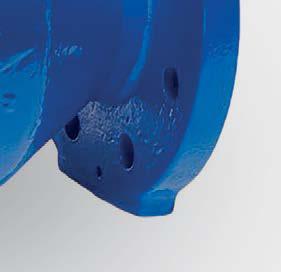






ROBB WEBB CEO, AFAC

It is with great anticipation that we begin the countdown to AFAC24 Conference and Exhibition powered by INTERSCHUTZ, taking place 3–6 September 2024. This year, the scale of our venue, the International Convention Centre Sydney (ICC), suggests this will be our largest offering of the event to date.
It’s a privilege for us to bring the Australasian emergency management sector together for four days of connection, learning and networking. These interactions are often the initial spark that sets off a ripple of new ideas and initiatives that benefit so many aspects of our work.
One of the many strengths of AFAC24 is that it brings together different conference streams, with many different expertise areas and interests, under one banner. The inclusion of the Research and Innovation Day, the Australian Disaster Resilience Conference, and the Institution of Fire Engineers (Australia) National Conference, represents the broad scope of emergency management and offers a unique opportunity for these fields to come together, broaden their knowledge, and grow toward a more interconnected emergency management sector. Combined with the Professional Development Program and the ever-popular INTERSCHUTZ Exhibition, there is truly something for everyone at AFAC24.
The diverse offering is reflective of the evolving and expanding delivery of our AFAC Member Agencies, and the conference program committee has designed a program that caters to the current and future issues for the sector. An impressive selection of speakers, presentations and panels are unified under the theme ‘Embracing innovation and disruption: designing the future for our sector’.
I hope to see you there this year as we mark a milestone 30 years of the AFAC Conference and Exhibition. Three decades of collaboration has provided us with valuable lessons to look back on, and a strong foundation to continue moving forward together.



The AFAC24 Exhibition will occupy over 18,000sqms and will feature hundreds of national and international brands, manufacturers, and suppliers.
PHOTO: Pixel Collective Pty Ltd
Fire
12 Industry gathers for Fire Australia 2024 16 AFAC Conference and Exhibition celebrates 30 years 18 Satellite imagery to help aerial firefighters find useable water sources
20 Local research, global impact at 7th International Fire Behaviour and Fuels Conference 22 15 years of EMSINA at AFAC conference 23 The role of bushfire consultants in bushfire safety
Inaugural bushfire conference a hit
Fire protection strategies for data centres
Water-based bushfire protection project
Recognition across the sector
News
Advocacy corner
Blast from the past 38 Burning ambition: Global platform for gender equity in fire and emergency services
Standards update
Calendar 42 Movers and shakers
To advertise in Fire Australia, contact: Chris Larsen, magazine@fpaa.com.au FPA Australia, PO Box 1049, Box Hill VIC 3128, Australia
to the material in this publication. It is not possible for FPA Australia to ensure that advertisements
and the provisions which apply to advertising. Responsibility lies with the person, company or agency
CHRIS LARSEN (FPA Australia) Tel +61 0431 900 712 chris.larsen@fpaa.com.au
ALANA BEITZ (AFAC) Tel +61 3 9418 5233 alana.beitz@afac.com.au
and AFAC. We aim to

Virtual reality (VR) has taken traditional practical-based training to the next level after the inaugural Aviation Rescue Fire Fighting (ARFF) services virtual simulation assessment.
Members of the ARFF services Officer in Charge (OiC) course 22C completed their structural response assessment within the newly developed Immersive Learning Environment (ILE) in lieu of the traditionally practical fireground. With the use of head-mounted displays, students entered a virtually simulated environment and responded with their virtual crew to a structure fire. On arrival, the students were presented a dynamic and responsive environment, developing in real time, requiring them to gain situational awareness, make decisions, and deploy their crews to gain control and resolve the incident.
The original integration of the VR simulation provided a great demonstration on how VR technology could serve to expand and support training options. The fourth generation


of operational workshops was the initial step to introduce the ILE to operational staff and has been a great success, with positive feedback from staff and industry, and ARFF services training receiving a Platinum Award for use of technology in the learning environment (LearnX).
After a successful trial using the virtual simulator during the OiC diploma course in 2023, the training team committed to implementing this into the PUA Public Safety assessment. Following initial positive feedback from the students and assessors, the team will continue to develop the virtual simulation program, investigating
further opportunities to integrate with other training programs and summative assessments.
The benefits of VR training include being able to learn and apply skills in a risk-free setting, being able to change scenarios quickly and easily (e.g. different conditions and situational factors), and a significant reduction in the environmental impact of training exercises. By investing in its digital training capability, ARFF says it is staying ahead of the technological curve and using the latest advancements to continually make training safer, more efficient, and more sustainable.
3–6 SEPTEMBER 2024

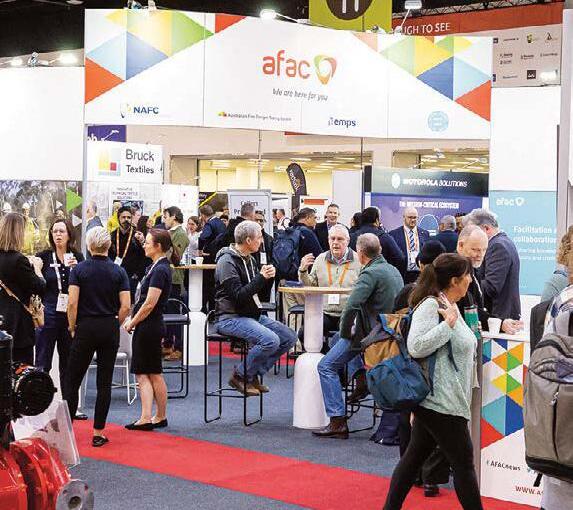
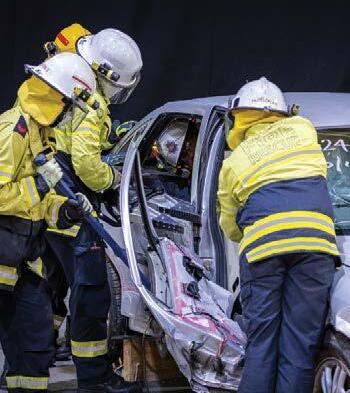



Senior leaders from FPA Australia recently visited the US to liaise with American colleagues on a variety of issues.
CEO John Collie and President Mark Potter met with fire protection and firefighting dignitaries and toured research facilities and operating fire stations.
They also attended the NFPA Conference and Expo, hearing from experts on a broad array of topics, from lithium-Ion battery fires, to innovations in fire detection and suppression systems, bushfire management and strategies for
improving fire safety in high-rise buildings.
“These discussions are not only relevant to our work at Fire Protection Association Australia but also crucial for shaping the future of fire safety globally,” Mr Collie said.
A highlight of the tour was a visit to the Insurance Institute for Business & Home Safety (IBHS) facility and testing labs in Richburg, South Carolina, learning about its important work on wildfire preparation and mitigation, and exploring opportunities for collaboration.


AFAC has announced its new online Hydrogen Safety Awareness Training program is now live. The training program is designed for all Australian career and volunteer emergency response, fire and rescue personnel, as well as non-operational team members. It introduces the properties, possible risks, and expected applications associated with hydrogen. It was developed by AFAC and Deakin University for the Australian Government.
The 60-minute training program is made up of seven sections and provides an accessible entry point
for career and volunteer responders to understand the fundamentals of hydrogen and the basics of how to respond to hydrogen incidents. Future training is expected to focus on advanced emergency scenarios and include more technical response advice.
AFAC is proud to have delivered this project alongside Deakin University, which took the lead in the development of this online course. Further thanks go to the working group whose input was invaluable, and to key stakeholders and subject matter experts who contributed to the design and development of the course.
This project was supported with funding by Australian governments through the Energy and Climate Change Ministerial Council. The funding provided the opportunity to create this training as a critical foundational step in the development of a safe, reliable hydrogen industry in Australia.
The link to the training program can be found at: https://hydrogen-training. afac.com.au/
For any queries or assistance with the online course, please email hydrogenonline@afac.com.au
In Australia there are approximately 4.4 million people living with disability. The Australian Institute for Disaster Resilience has launched a new online collection that brings together knowledge and guidance on disability-inclusive disaster risk reduction.
The collection includes legal and policy frameworks and resources and guidance to support inclusive planning for individuals and enhance capabilities for emergency management practitioners.
It also features the four-part Leave Nobody Behind webinar series that demonstrates how different stakeholder groups are taking action on disability-inclusive disaster risk reduction.
The collection also brings together research, guidance, and resources from the Collaborating4Inclusion team at the University of Sydney, case studies, and articles and peer-reviewed research related to disability and disaster in the Australian Journal of Emergency Management
The Disability Inclusive Disaster Risk Reduction Framework states that listening to people with disability and learning about their experiences is essential to understanding and removing the barriers that increase vulnerability in disasters
Explore the collection online: https://knowledge.aidr.org.au/collections/ disability-inclusion-and-disasters/

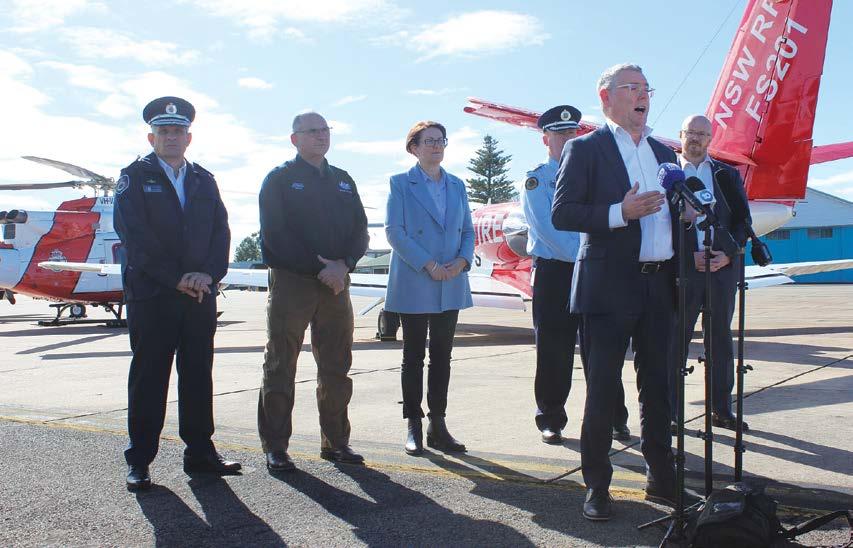
The Australian Government has committed an additional $35 million over the next two years to the National Aerial Firefighting Centre (NAFC), which supports the delivery of national, state, and territory aircraft for use by fire and emergency services.
This investment will deliver a broader range of aerial assets, moving from specific firefighting aircraft to a mix of fixed-wing and rotary multi-use assets, significantly strengthening protection for communities as they face a diverse range of more intense, frequent and concurrent disasters due to the effects of climate change.
The increased funding takes the Australian Government’s contribution to national aerial capability to approximately $48 million a year.
“States and territories have, and will continue to have, primary responsibility for Australia’s aerial firefighting and rescue capability. But this boost will deliver more assets that will be able to be deployed right across the country, wherever they are needed,” former Minister for Emergency Management Murray Watt said.
“With this investment, we are not only increasing the number of aircraft available, but also broadening the type of aircraft so they can be used for different activities such as heavy lift, transportation, and evacuation and resupply operations.”
In addition to this new investment, the National Emergency Management Agency (NEMA) has been tasked with leading a comprehensive review in support of the existing state and territory capability.
The fleet review and additional funding addresses the intent of Recommendation 8.1 from the Royal Commission into National Natural Disaster Arrangements.
As at 31 March 2024, the fleet delivered in a long-established partnership between states and territories comprises 162 aircraft. This fleet is supplemented by additional state-owned and state-contracted aircraft hired to meet peak demand across Australia. In total, more than 500 aircraft, provided by more than 150 operators, are available for firefighting across Australia.
With the support of NAFC, state and territory operational fire chiefs and commissioners annually review the composition and requirements of the fleet to be prepared for the next bushfire season.
In May 2024, the US Federal Emergency Management Agency (FEMA) and the US Fire Administration hosted delegates from more than 50 nations at the inaugural World Fire Congress in Washington, DC. The world’s firefighting organisations and government officials came together to share best practices and enhance all nations’ response capabilities.
With climate change spurring bigger and stronger wildfires and other disasters across the globe, it is more important than ever to strategise ways to mitigate these threats.
FEMA Administrator Deanne Criswell opened the World Fire Congress.
“The world has watched as our ecosystem, our shared home, has been challenged at every turn, and the reality is we’ve never been more closely connected,” she said.
“A disaster in one nation can cause ripple effects across the globe. That’s why this World Fire Congress is so important—it’s an opportunity to build upon these relationships and continue to share knowledge and best practices with one another.”
The World Fire Congress was attended by Australasian representatives including AFAC President and Department of Fire and Emergency Services WA Commissioner Darren Klemm AFSM, Fire and Rescue NSW Deputy Commissioner Megan Stiffler, Fire Rescue Victoria Commissioner Gavin Freeman AFSM, Fire and Emergency New Zealand Chief Executive Kerry Gregory and Deputy Chief Executive Russell Wood, and Ryan Cleggett of the Institution of Fire Engineers (Australia).
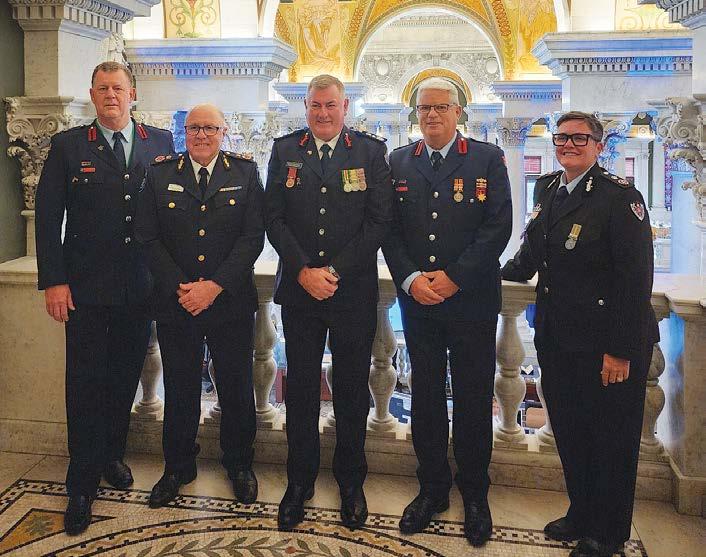
This historic event established a global fire service leadership network dedicated to supporting and strengthening fire services around the world and developing solutions to shared problems. This plan for international collaboration among fire services will be perpetuated through the Statement of Founding Principles and Objectives. The Congress will take place every two years and the next will be hosted by the UK Home Office and National Fire Chiefs Council in 2026.
Learn more about the World Fire Congress and view the Statement of Founding Principles and Objectives: https://www.firehero.org/world-fire-congress/

Her Excellency the Hon. Ms Sam Mostyn AC has been sworn in as Australia’s Governor-General, taking the reins from General the Hon. David Hurley AC DSC (Ret.), who had served as FPA Australia’s patron for the past five years.
General Hurley began duties as Australia’s 27th Governor-General on 1 July 2019. Prior to this, he had a five-year term as the 38th Governor of NSW.
His career has mostly been spent as an officer in the Australian Army, where his 42-year tenure culminated in his appointment as the Chief of the Defence Force.
In 1993 he received a Distinguished Service Cross for his service in Somalia; in 2004 he was made an Officer of the Order of Australia; and, in 2010, he was appointed a Companion of the Order of Australia for eminent service to the Australian Defence Force.
FPA Australia expresses its deep gratitude to General Hurley for his patronage of the organisation—our staff have been honoured to work with him over the past five years and receive his support.
The organisation hopes to have as fruitful a relationship with the new Governor-General as was enjoyed with her predecessor.
ReFire has joined the Reece Group but will continue to operate as a stand-alone business within the group. Reece Fire has opened six branches in Victoria, NSW, SA and the NT in the past three years. The merger will take the combined network to 12 fire branches, including Queensland and WA.
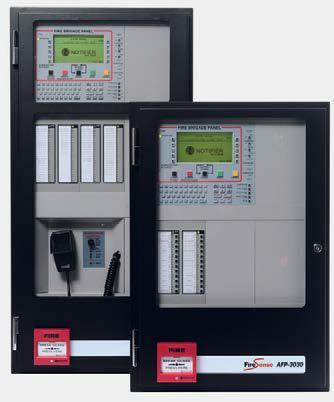







FPA Australia recently hosted the leader of its New Zealand counterpart, Scott Lawson, at its headquarters in Melbourne.
Mr Lawson, the CEO and Council Chair of FPA New Zealand, met both the Australian executive team and Board members.
“Meetings like these strengthen ties and help our organisations collaborate on important issues of mutual interest,” FPA Australia CEO John Collie said. “We look forward to future meetings with our FPANZ counterparts.”
FLAIM Systems has donated one of its FLAIM Trainers to the State Emergency Services of Ukraine, which continues to battle Russia in the country’s east.
The donation was made in collaboration with UK vehicle manufacturer North Fire and the charitable Ukrainian Firefighters Foundation.
The FLAIM Trainer replicates the stress and uncertainty of real-world scenarios to enhance firefighter readiness, allowing them to train for a diverse range of complex scenarios. It combines virtual reality technology with industry standard branch, hose and breathing equipment. It is estimated that annual training of 2000 hours saves the equivalent of 20 million litres of water and 27 tonnes of carbon emissions.
Wormald is celebrating its 135th anniversary this year.
In 1889, Stanley Russell and Joseph Wormald began operating a Sydney import business as ‘Russell and Wormald’, selling sprinklers, fire extinguishers, fire doors, and insurance.
Russell retired and Harry Wormald joined his brother as partner in 1900, with a change in business name to Wormald Brothers & Wears.
Wormald claims several significant Australian ‘firsts’ in its history, including carbon dioxide fire extinguishing and high-expansion foam systems, large-scale dry chemical systems, early warning
smoke detection and alarms, the solid-state fire detector, and the first road tunnel fire system. Since inception, it has expanded its offering to security, and safety and asset protection systems for the defence and marine industries.
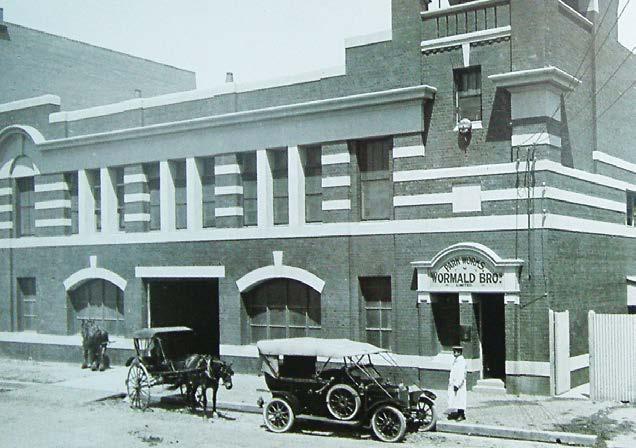

Since 2009, the Council of Ambulance Authorities (CAA) Congress has been the gathering place for leaders of the Australasian pre-hospital and emergency management sectors to learn, collaborate, and shape the future of those industries.
Recognised as Australasia’s premier event for the ambulance sector, the CAA Congress brings together top leaders, decision-makers, and senior management teams from ambulance services, health, and emergency management sectors across Australia, New Zealand, Papua New Guinea and beyond.
In partnership with Ambulance Victoria, the 2024 Congress will be held in Melbourne from 14–16 August.
This year’s Congress—themed ‘Inspire, Innovate, Elevate’—will feature an engaging program that explores best practices and innovative strategies in emergency health services and beyond.
The Leadership Excellence segment will feature renowned speakers sharing their invaluable insights and experiences. Brendon Brodie-Hall from St John WA will provide a unique perspective from the mining sector, discussing leadership challenges and strategies. Jordan Emery from Ambulance Tasmania will present a visionary session on ‘leading with love’, advocating for compassionate leadership as the future of effective management. Anna Parry from the UK’s Association of Ambulance Chief

Executives (AACE) will delve into their collaborative efforts with the UK NHS to reduce misogyny and enhance sexual safety within the workforce.
The session on the Future Approach to Disasters features Peter Bradley, Chief Executive of Hato Hone St John (NZ), and Chris Harrison, Emergency Capability Manager, who will co-present their recent government reviews into the White Island Volcanic Eruption and Christchurch terror attacks. They will discuss the critical organisational and strategic changes required to better respond to mass casualty events, highlighting enhanced readiness and response strategies.
Erica van Ash, Specialist Adviser in CBRN Health Systems and Security, will present on preparedness for chemical, biological, radiological, and nuclear (CBRN) threats. Her insights will focus on integrating health systems with security measures, emphasising cross- sector collaboration and advanced preparedness protocols to safeguard public health during such disasters. This session will offer
invaluable guidance on enhancing resilience and ensuring swift, coordinated action in future crises, drawing on lessons learned from recent emergencies.
In addition, this year’s Congress will feature several engaging panels. Experts will come together to discuss pivotal topics, including the developments and advances in clinical excellence, the future of disaster response in ambulance services, and the evolving leadership landscape within the Australasian ambulance sector. Concurrent sessions, selected from more than 70 abstract submissions, will provide a comprehensive and diverse program, ensuring attendees gain valuable insights and practical knowledge.
This year’s CAA Congress program promises to be an exceptional convergence of knowledge, experience, and forward-thinking, designed to inspire, innovate, and elevate our community.
As always, the annual CAA Awards for Excellence will be a highlight of the Congress, celebrated at a marquee gala dinner. This prestigious event will showcase the finest projects, research, and innovations, evaluated by a panel of internationally renowned judges across six categories, culminating in the highly acclaimed Star Award.
Learn more and register at: https://caacongress.net.au
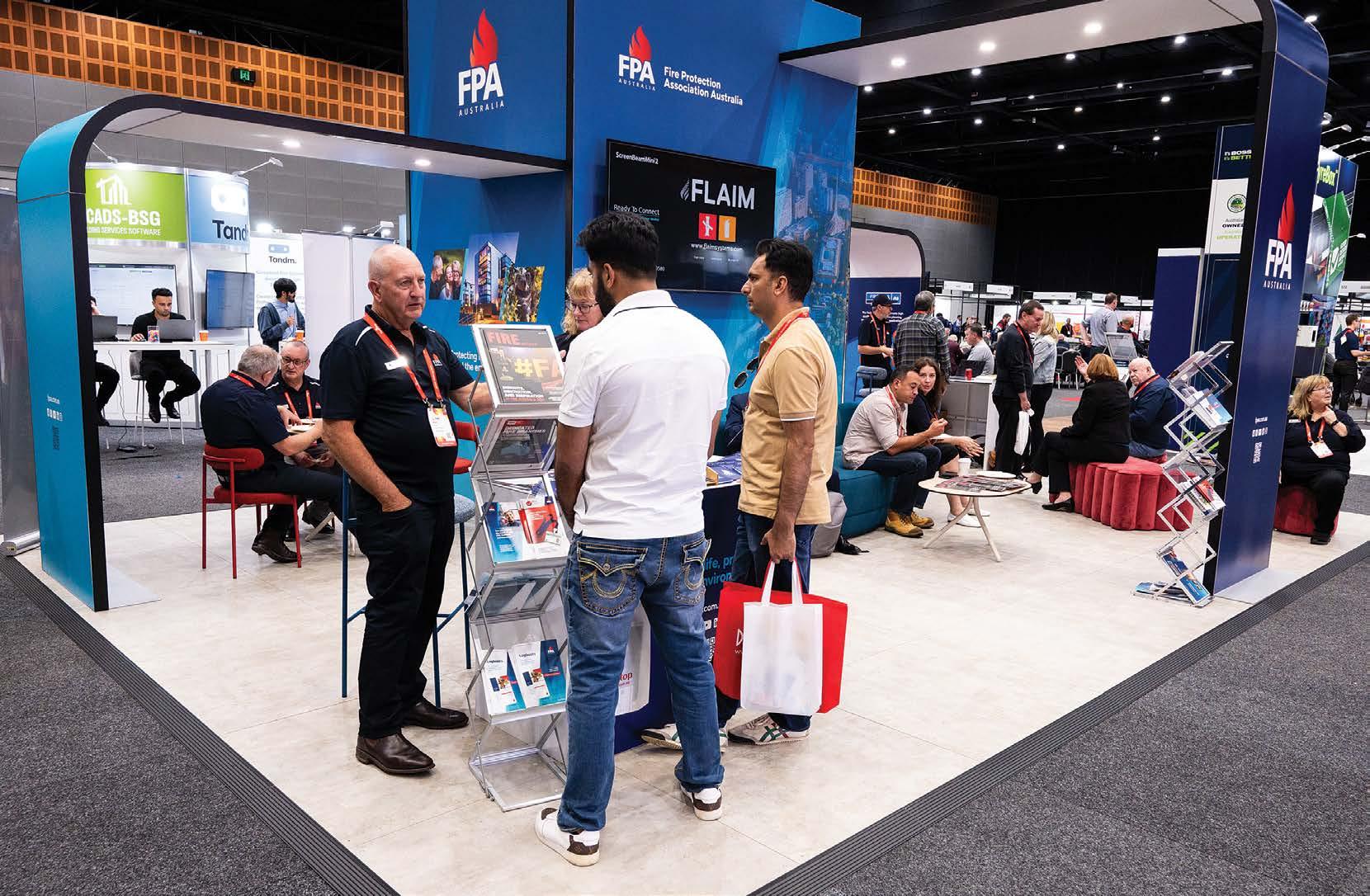
Thousands of fire protection professionals converged on the Gold Coast on 8 and 9 May for the annual Fire Australia conference.
Approximately 2000 delegates and more than 70 exhibitors at the Fire Australia 2024 conference heard the latest from experts and commentators on an array of topics, from fire safety research, sustainability and insurance, to bushfire risk reduction, the hazards of lithium-ion batteries, new fire mapping models and more.
Here, we showcase some of the more high-profile speakers and topics.
International trends and technologies demand a fire safety renaissance
Dr Charley Fleischmann (UL Fire Safety Research Institute) outlined his vision for a renaissance in fire prevention.
He argued that, while fatalities (per million population) have trended downwards since the 1980s, it has now plateaued.
Challenges include synthetic materials used in furniture, such as polystyrene. While lightweight
and easy to transport, they burn stronger, faster, produce thicker smoke and faster flashover times than natural fibres.
Likewise, the popularity of food delivery services have resulted in more e-bikes being used and, because of theft rates, being stored in homes— heightening the prospect of thermal runaway fires from lithium-ion batteries.
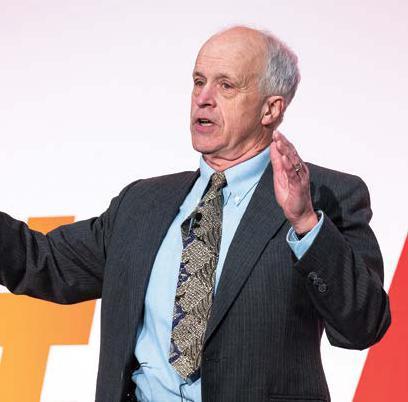
‘Green facades’—where vegetation is planted on the exterior of highrise buildings—were equally risky if not maintained and watered.
“Think of them as vertical bushfires,”
Dr Fleischmann quipped.
He outlined five things that must be done to reduce fire risk:
educate the public
continue research in areas where fire dynamics are not well understood
be vigilant about emerging fire threats
improve firefighter knowledge
continue research into all aspects of fire.
“Fire threats will continue to evolve faster than we can respond,”
Dr Fleischmann concluded. His advice for the industry? “Fire research is expensive—share everything, and steal what you can.” In other words, work together collaboratively.

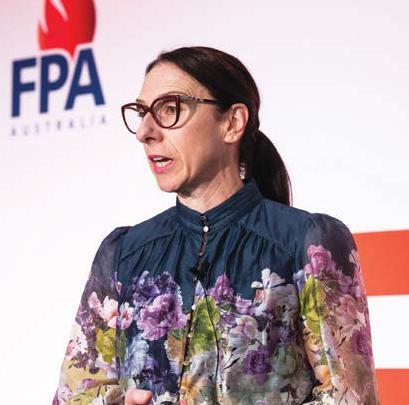
Elvira Nigido (A-Gas) discussed the work underway to recycle and reuse ozone-depleting substances (ODS) and synthetic greenhouse gases (SGS), particularly as “the tap is turning off for product coming into Australia”.
Australia’s National Halon Bank (NHB) operates to purify and store halon, used in some fire extinguishing systems, particularly in the aviation and defence industries. The NHB stores waste halon and halon recovered from decommissioned systems, and was established to maintain a stock of halon for non-defence uses until the transition to alternatives is complete.
Ms Nigido outlined challenges associated with ODS and SGS, such as stockpiling, under-reporting of accidental discharges, and low visibility on leakage rates.
Two sessions on day one focused on the challenges of lithium-ion fires.
Richard Taylor (Honeywell) detailed the expected growth of the lithiumion (Li-ion) market, with 20% of new passenger vehicles sold being electric vehicles (EVs). While Li-ion batteries are popular, Li-ion fires are extremely dangerous, with off-gassing occurring before thermal runaway. Planning by firefighters should focus on containment, letting the product burn rather than trying to extinguish.
Ray Merguard (Fire Safety Equipment) and Steve Birch (FlameStop Australia) talked about the required changes to AS 1841 and AS 1850 standards to include extinguishers for ethanol and Li-ion fires. In the absence of an Australian Standard for Li-ion extinguishers, TAC working groups are looking for as much input from industry as they can get to help make the required changes to the standards. Education on the use of extinguishers for the public is also needed.

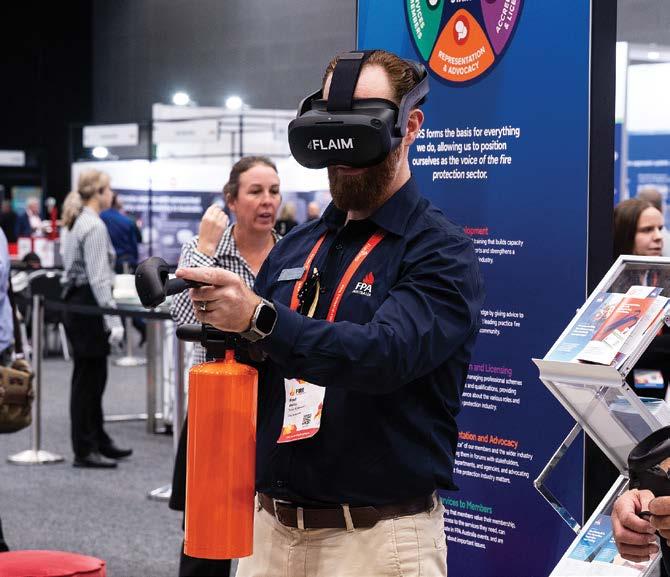
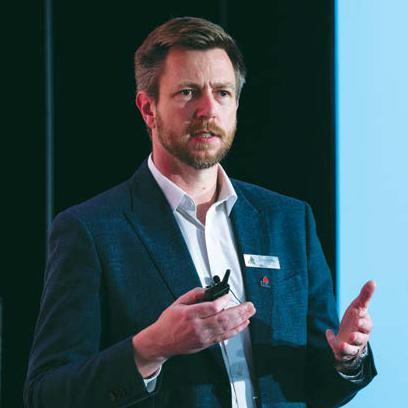
Fire Protection Association Australia
CEO John Collie gave an update on important initiatives the organisation is currently working on, including:
progress on delivering the organisation’s five-year strategic plan, Directions 28
important advocacy work across Australia, including the co-regulation model and FPAS agreement in NSW; collaboration with the Victorian Building Authority, Fire Rescue Victoria and Country Fire Authority in Victoria; liaising with the SA Government on AS 1851 and legislation for fire safety engineering; meetings with the Queensland Government on licensing reforms; and much more
using industry feedback to update FPA Australia’s planned bushfire diploma
introduction of a new learning management system, Cloud Assess
preparations for National Fire Protection Month in September.
Learn more about all of FPA Australia’s upcoming initiatives: www.fpaa.com.au

Arguably saving the best for last, Professor Arnold Dix (barrister, scientist, Professor of Engineering) closed out the conference with an inspirational story about his work leading the effort to rescue trapped miners in Uttarakhand, India.
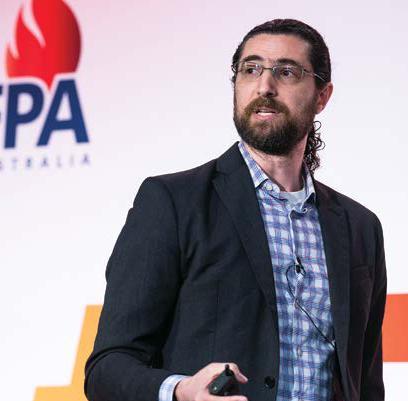
Tackling an age-old problem seen across multiple industries—the lack of communication between professionals—three industry stalwarts made the case for engineers across the divide to talk to each other.
David Isaac (Fire and Safety Technologies), Dr Jonathan Barnett (BASIC Expert) and Alan Wilson OAM (Alan Wilson Insurance Brokers) pointed out that, if designers were legally liable for their designs, it behoves them to communicate with their counterparts.
“Everyone’s getting a bad rap here because we’re not talking to each other,” Mr Isaac said. “I love this industry. But we have to get hold of the young guys and give them the skills and training to do the job.
The mission was extremely challenging: breach 80 m of unstable earth to rescue 41 miners. The clock was ticking—further collapse was inevitable.
Professor Dix’s assessment on arrival at the scene was blunt: “There’s a technical term that begins with ‘f’,” he offered. “The mountain was absolutely alive. It was still collapsing.”
But he made a promise to the miners, their families and the local community: “41 men are coming home. No-one is going to get hurt. They’ll be out by Christmas.”
Their methods were unconventional: transporting peanuts, lentils, and anti- depressants down a pipe to those trapped; engaging with local customs to rally support, including kneeling at a mine-entrance shine and appropriating a supervisor’s helmet before having it blessed; even sneaking away from local officials so he could return to the
Noah Ryder (Fire & Risk Alliance) has made it his mission to educate stakeholders—such as firefighting services, strata managers, and local government authorities—about the risks involved in energy storage systems (ESS).
Firefighters around the world are adopting a ‘let it burn’ approach to ESS fires, given their extreme intensity.
Dr Ryder has a plan to address the gaps between manufacturers and code
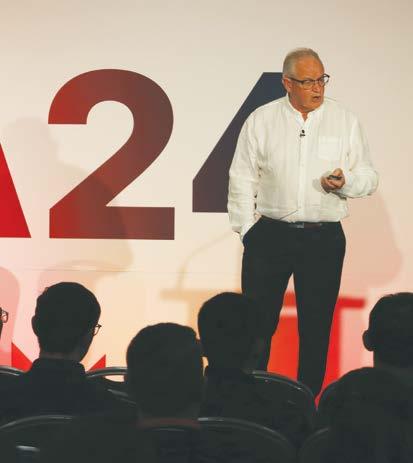
“Talk. Collaborate. Make the design work. Get out there, communicate, have great designs and less problems.”
As Dr Barnett summarised: “The whole industry needs to take being a stakeholder seriously.”
site and literally sleep with the troops doing the digging. (“The best work is done when management is in bed,” he said.)
A mere 10 m from their goal, disaster struck. Their auger crashed into rebar, forcing the team to send workers into the pipe with plasma cutters to complete the work. Until, finally, success—the men were freed, as promised.
Professor Dix brought the audience back down to earth with a message that should resonate with everyone in the fire protection industry: be positive and determined.
“What we did was different,” he said. “We concentrated on what we were going to achieve.”
Professor Arnold Dix
compliance, real and perceived risk, and standards demand and delivery. It involves filling the gaps by providing first responder training, 24/7 support, and community engagement.
Here’s his advice for fire professionals:
minimise the risk but plan as though fire is a certainty
build robust, product-level systems to mitigate consequences
analyse potential impacts
plan your site accordingly educate and train stakeholders.

FPA Australia thanks delegates, sponsors and exhibitors for making Fire Australia 2024 possible.
Planning has already begun on the 2025 event—for more information go to www.fireaustralia.com.au


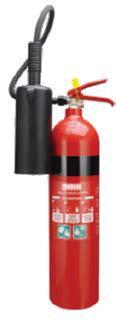







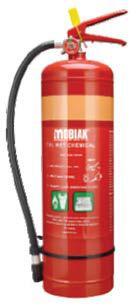

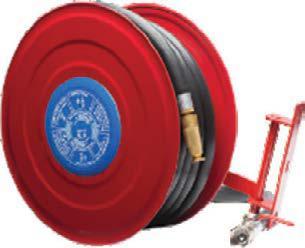

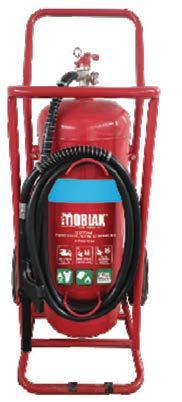



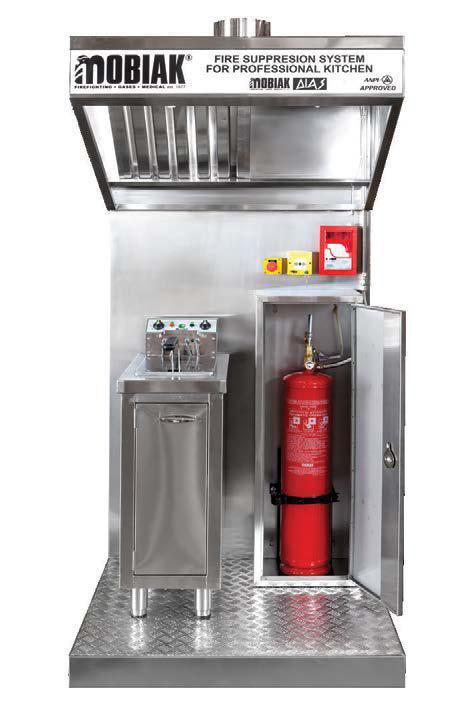

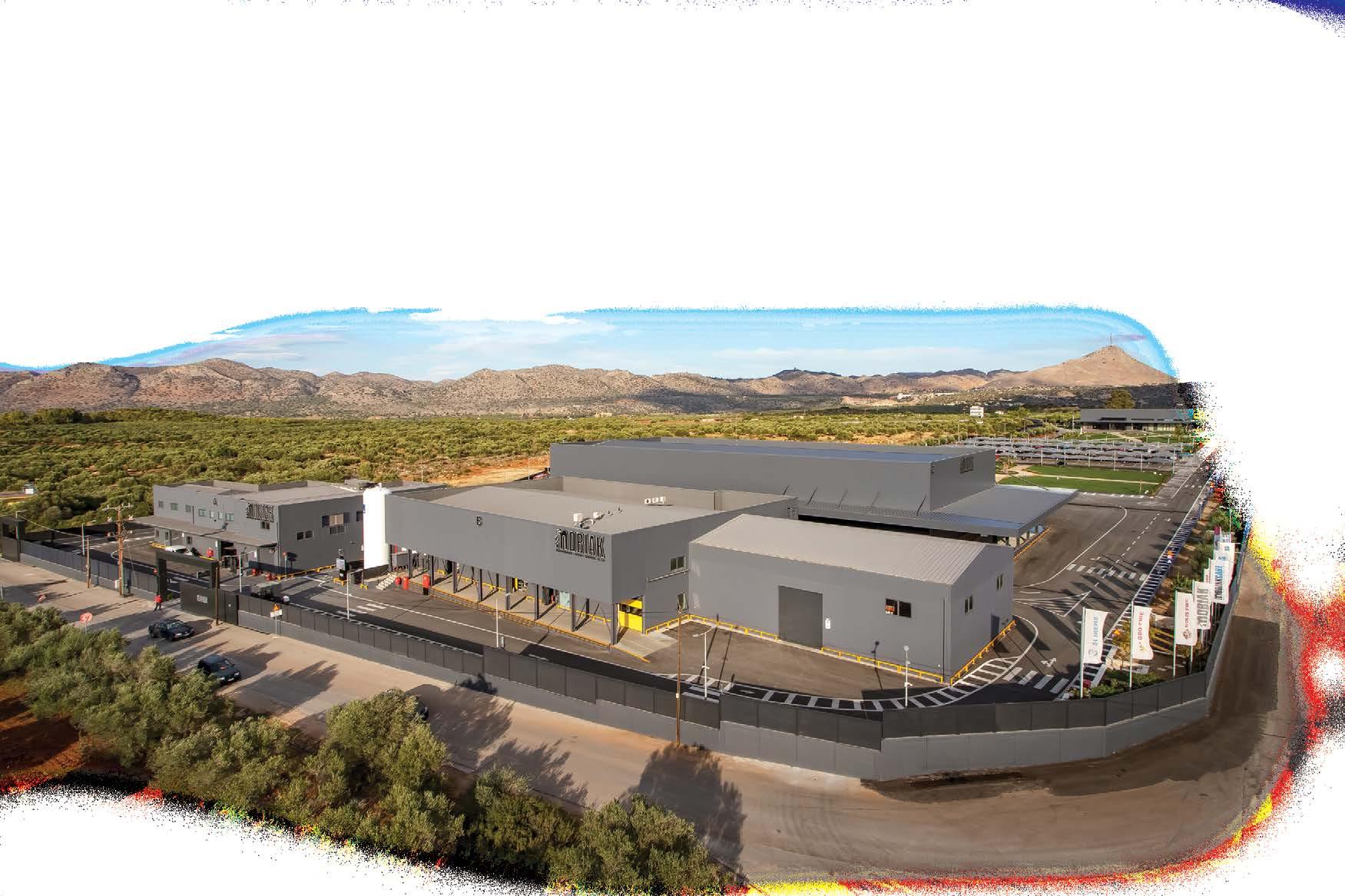
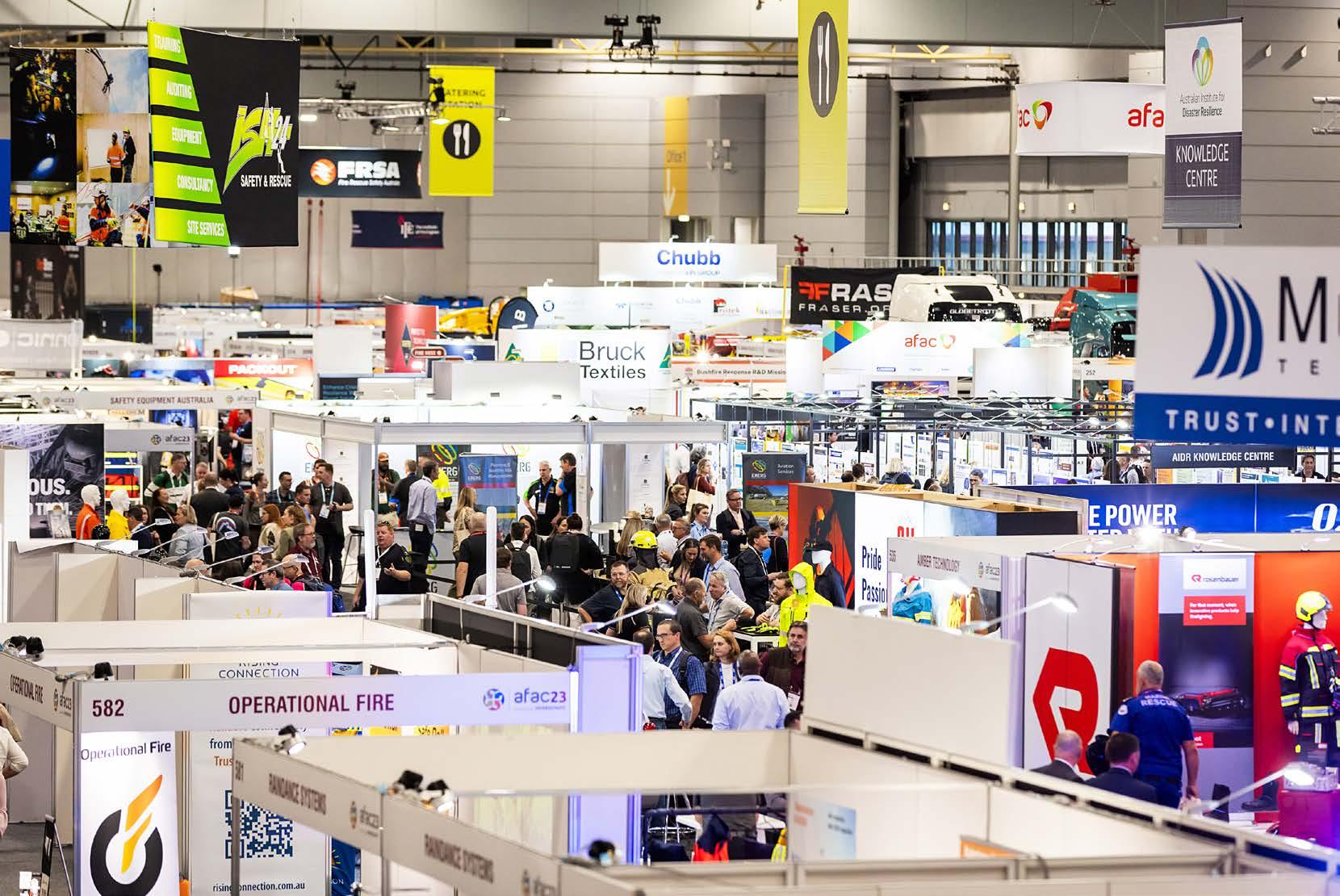
The AFAC24 Conference and Exhibition powered by INTERSCHUTZ returns to Sydney on 3–6 September, bringing a variety of keynote speakers, presenters, emergency management practitioners, and agencies together to explore the theme ‘Embracing innovation and disruption: designing the future for our sector’.
LISA JAUNALKSNIS
AFAC
AFAC24 Conference and Exhibition powered by INTERSCHUTZ returns to Sydney on 3–6 September, bringing a variety of keynote speakers, presenters, emergency management practitioners, and agencies together to explore the theme ‘Embracing innovation and disruption: designing the future for our sector’.
The theme encourages new ideas, innovative technology, and diversity of thought to combat the increasingly difficult challenges the sector can expect to face in the coming years. From advancements in technology, to climate change and limited resources, the emergency management sector— now more than ever—must be prepared and equipped to take on these new challenges.
This year marks 30 years of the AFAC Conference and Exhibition. Traditionally, pearls are the gemstone that represent a 30-year anniversary, which will be reflected in the theme of this year’s conference gala dinner, ‘Black, white and a touch of pearl’. AFAC delegates who attend the gala dinner will experience an evening packed with entertainment, food, and networking opportunities.
AFAC24 will include a wide variety of informative experiences, beginning with the AFAC Research and Innovation Day, followed by the multi-streamed, two-day AFAC conference, as well as workshops and forums offered through the Professional Development Program. The conference will feature the Australian Disaster Resilience Conference and the Institution of Fire Engineers (Australia) National Conference, running as concurrent streams of the conference program. Registrations are currently open for the AFAC conference pass, which includes access to these streams, offering a comprehensive experience that delegates can tailor according to their interests.
This year’s conference features renowned keynote speakers from across the globe, who will explore challenging themes and share valuable insights to help prepare the sector for the future. Day one of the conference will begin with keynote speaker Dr Lori Moore-Merrell, US Fire Administrator from the Federal Emergency Management Agency (FEMA), presenting on ‘Transformational leadership: innovation in a world of change’.
Dr Moore-Merrell’s presentation will be followed by keynote speaker Douglas D’Antoine, Recovery Executive Officer, Shire of Derby-West Kimberley, who will discuss ‘Recalibrating best practice – Aboriginality and the Fitzroy Valley Flood Recovery Working Group’.
The remainder of day one will consist of thought-provoking sessions exploring a broad range of topics including data, bushfire risk, community engagement and warnings, youth engagement, the volunteer workforce, and floods following fires.
Kicking off day two of the conference is keynote speaker Dr Catriona Wallace, Adjunct Professor and founder of the Responsible Metaverse Alliance, as she presents ‘Checkmate humanity: the how and why of responsible AI’.
Keynote speaker Brendan Moon AM, Coordinator-General, National Emergency Management Agency, will then explore ‘Disruption as innovation: designing for risk in Australia’.
Following this, day two of the program will be filled with panels and presentations surrounding themes including culture and leadership, alternative energy, intelligence, capability and case studies,
The AFAC24 trade exhibition will feature hundreds of national and international brands, manufacturers, and suppliers that showcase their latest products and services.
First Nations’ perspectives, and new tools and systems.
On 6 September, AFAC24 is offering exciting field trips and events as part of the Professional Development Program. Through a selection of educational experiences, delegates can gain a deeper understanding of current and pressing challenges facing the sector. This includes a field trip to learn more about resilience and recovery in the Blue Mountains through the Resilient Villages project, a flood-expert-guided bus tour of the Hawkesbury–Nepean Valley, which poses the number one flood impact risk in NSW, as well as events that will explore fire engineering principles, geospatial intelligence tools, and flood rescue training.
The AFAC24 conference is supported by the INTERSCHUTZ trade exhibition. This year’s exhibition features a variety of local and international exhibitors showcasing their latest products, services, and solutions for operational and best practice outcomes.
The AFAC24 exhibition is a standout event that has state-of-the-art equipment, cutting-edge technology, and learning service providers. The exhibition floor will be packed with stalls from organisations across the sector. It will also feature the Demonstration Zone, where live demonstrations will take place on the extensive outdoor deck area; the Solutions Theatre, where delegates can hear 20-minute practical and educational presentations from the exhibiting manufacturers and suppliers; and the AIDR Knowledge Centre, where delegates can view conference posters and engage with conference presenters in the Meet the Speaker Lounge.
After a highly successful debut in 2023, Resilience Lane will be returning to the exhibition hall, including up to 16 exhibitors—a place where not-for-profit and community-focused organisations can showcase their work to strengthen community resilience.
AFAC24 also acknowledges the 2024 host agencies that make this year’s event possible: ACT Emergency Services Agency; ACT Parks and Conservation; Fire and Rescue NSW; Forestry Corporation of NSW; NSW National Parks and Wildlife Service; NSW Rural Fire Service; NSW State Emergency Service; and Surf Life Saving NSW.
AFAC looks forward to connecting with everyone from the emergency management sector and celebrating 30 years of the conference with this special and celebratory event.

Dr Lori Moore-Merrell, DrPH, MPH
US Fire Administrator, FEMA
Dr Lori Moore-Merrell was appointed by President Joseph Biden as the US Fire Administrator on 25 October 2021. Prior to her appointment, Dr Moore-Merrell served nearly three years as the President and CEO of the International Public Safety Data Institute (IPSDI), which she founded after retiring from a 26-year tenure as a senior executive in the International Association of Fire Fighters (IAFF). She began her fire service career in 1987 as a fire department paramedic in the City of Memphis Fire Department, Tennessee. Dr Moore-Merrell is a Doctor of Public Health and data scientist, whose work has changed fire and EMS deployment throughout the world.
Douglas D’Antoine
Recovery Executive Officer, Shire of Derby–West Kimberley Douglas D’Antoine is Bardi and Jawi from country 200 km north of Broome, WA Australia. He resides in Broome and has a somewhat unique position as to the advancement of Aboriginality that is overwhelmingly supported by the Fitzroy Valley 2023 ‘lived experience’. Prior to the devastating Fitzroy Valley floods, caused by ex-Tropical Cyclone Ellie in January 2023, Mr D’Antoine was a native title lawyer and then became the deputy CEO at the Kimberley Land Council, a corporate oil and gas lawyer at Woodside and then BP (upstream), roustabout and wool presser, and a police officer. At the time of the floods, he was the CEO for Bunuba Dawangarri Aboriginal Corporation that holds native title on trust for the Bunuba language group.
Dr Catriona Wallace
Author, Speaker, Adjunct Professor, Founder of the Responsible Metaverse Alliance
Dr Catriona Wallace has been recognised by the Australian Financial Review as the most influential woman in business and entrepreneurship. Dr Wallace is an expert in the field of artificial intelligence and the metaverse, and is an Adjunct Professor, keynote speaker, and founder of the Responsible Metaverse Alliance. Dr Wallace is also the co-author of the book Checkmate Humanity: The How and Why of Responsible AI. As the founder of one of the first artificial intelligence companies to list on the Australian Securities Exchange, Dr Wallace has truly lived the life of an entrepreneur and CEO in the emerging technologies field.
Brendan Moon AM
Coordinator-General, National Emergency Management Agency
Brendan Moon AM commenced work as the first Coordinator-General of the National Emergency Management Agency in October 2022. He brings extensive expertise and experience in disaster response, recovery, preparedness, and risk reduction, having spent 10 years with the Queensland Reconstruction Authority (QRA), starting as the General Manager, Operations in 2011 until his appointment as Chief Executive Officer in 2016. While with QRA, Mr Moon led statewide reconstruction and recovery operations for all significant natural disasters in Queensland from late 2015 until 2022

Satellite imagery tells us there are more than 300,000 waterbodies across Australia—but was any water in them recently?
AFAC asked Geoscience Australia this question in 2023 and the answer has arrived in the latest version of Digital Earth Australia (DEA) Waterbodies, which now includes improvements to help support emergency managers Australia-wide.
DEA Waterbodies uses satellite data collected since 1987 to show changes in the estimated wet surface area of Australian lakes and dams. Since its initial release in 2019, it has been used by farmers and environmental managers to understand how waterbodies in their areas have changed in the past 30 years.
When AFAC learned about DEA Waterbodies, they were excited to find a tool that could potentially help aerial firefighters understand where water was available on the ground. However they needed more detail—such as how up to date the information was— before being able to confidently use it in their operations.
Bex Dunn is an Earth Observation Scientist and the project lead for DEA Waterbodies.
“As part of a collaborative project between AFAC, Natural Hazards Research Australia (NHRA) and FrontierSI, we learned that emergency managers wanted clearer and more
reliable information about our satellite data on water to make it more useful in pre-season and pre-flight planning,” she said.
“We improved our data to clarify when the satellites had last seen water, and when the last satellite passed over the waterbody, as well as to provide an estimated wet surface area of each waterbody from the most recent satellite observation. These updates will help support aerial firefighters in understanding the currency and distribution of surface water across Australia when planning emergency responses.”
AFAC Executive Director, National Capability, Sandra Whight said the organisation facilitated engagement with members across the sector, and helped
with data formatting to ease integration into decision-support tools used by AFAC in aerial firefighting operations.
“The earlier version of DEA Waterbodies did not necessarily contain the information agencies are seeking when trying to understand where water might be in the environment,” she said.
“The new product includes information that helps to understand the data currency, as well as the potential extent of the waterbody.
“A resource-to-risk tool is being developed by AFAC with the National Aerial Firefighting Centre as part of the ARENA platform that supports aerial firefighting operations. The new waterbodies data is one of the data inputs that could be used by this tool
Below: DEA Waterbodies shows the estimated surface area of Island Lagoon and Lake Macfarlane near Woomera, SA. The inset graphs show how the water surface area has varied significantly year on year since 1986.
A continent-wide image of Australia overlayed with approximately 300,000 waterbodies of the DEA Waterbodies product. Thick blue outlines indicate areas where water has been observed at least some of the time over the past 30 years.


to support the planning and options analysis work the tool will inform.
“The tool is still being developed; however, having access to this refined data and information is seen as an important part of the project.”
Vital collaboration
Ms Dunn notes how working with AFAC has improved DEA Waterbodies for all stakeholders.
“Collaboration has been really vital to hear directly from our stakeholders about what exactly is useful to them and why,” she said.
“As part of this process we’ve learned some lessons about the value
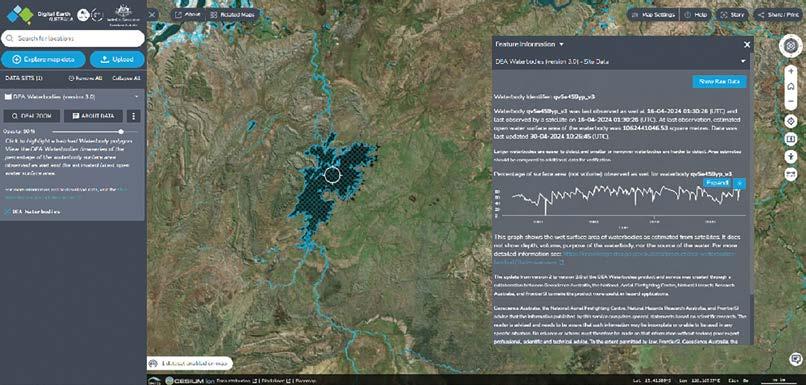
of incorporating the needs of our stakeholders into our products and how that improves the quality for all our users.
“Ultimately, it has allowed us to get our satellite data all the way through to the people that need it. Supporting
them to access it in the best way is pretty valuable.”
DEA Waterbodies 3.0 is now available: https://www.ga.gov.au/ scientific-topics/dea/dea-data-andproducts/dea-waterbodies




The global fire science community gathered to discuss the latest research, practices, and future themes at the 7th International Fire Behaviour and Fuels Conference, hosted by the International Association of Wildland Fire and held concurrently in Canberra, Australia; Boise, Idaho; and Tralee, Ireland in April 2024.
JOANNA WOOD
Natural Hazards Research Australia
At the 7th International Fire Behaviour and Fuels Conference, 11 keynote speeches and 363 presentations took place concurrently on the theme ‘Fuel, fire and smoke: evolving to meet our climate challenge’. Australasian delegates were treated to more than 100 research presentations from colleagues, peers, research students, and industry leaders.
Key themes tackled included: risk modelling; fuel management; emerging tech and approaches; cultural perspectives; human dimensions; and weather and climate.
Opening keynote speaker in Canberra and Boise, and speaking from her home in Indiana, US Fire Administrator Dr Lori Moore-Merrell provided global context to the ongoing and increasing challenges facing fire response and management agencies. She drew on recommendations from the Wildland Fire Mitigation and Management Commission’s recent report to the US Congress to improve federal policies related to the mitigation, suppression, and management of wildland fires, and the rehabilitation of land devastated by wildland fires.
Dr Moore-Merrell emphasised the fire science community’s role in meeting our climate challenge through the development of fire-adaptive communities and preparedness. She also stressed the need for “intelligence, not just information” through leveraging information across all fire and emergency management agencies.
Dr Lachlan McCaw AFSM drew on his extensive experience as a fire scientist in WA and elsewhere to celebrate fire management
achievements over the past 40 years, and new directions for the future.
Professor Nerilie Abram, Professor in Climate Science at the Australian National University, spoke on the future of fires and fire ecology, and highlighted the impact of climate variability on dangerous fire weather in south-east Australia.
Dr Dean Yibarbuk, Chairman Warddeken Land Management Ltd, presented a highly impactful keynote address on colonisation and disconnection of First Nations peoples in Western Arnhem Land from their cultural fire practices, and their subsequent re-establishment

Key themes tackled included: risk modelling; fuel management; emerging tech and approaches; cultural perspectives; human dimensions; and weather and climate.
in the past 20 years. Streamed to delegates in Boise, Dr Yibarbuk shared the Warddeken Rangers’ mission to “share the gift of understanding fire without fear” with fire managers around Australia and the world.
Dr Yibarbuk also participated in a keynote panel discussion alongside Aidan Galpin (SA Country Fire Service), Dean Freeman (Riverina Local Land Services), Dr Rowena Morris (Natural Hazards Research Australia), Kirsty Babington (ACT Parks and Conservation Service), and former International Association of Wildland Fire (IAWF) President Dr Mike DeGrosky, visiting from the US. The panel was hosted by anthropologist and disaster psychologist, Dr Steve Sutton, who led a conversation that unpacked culture, human nature, and fire management.
Professor of Wildlife Conservation, Professor Sarah Legge from Charles Darwin University highlighted the value of small patch burning on species biodiversity through the Pirra Jungku project, run in partnership with the Karajarri Rangers on their Country in the Great Sandy Desert in the Western Kimberley region of WA. The concept of ‘right fire’ carried out in the correct cultural way by the correct people, and the way these people interact with the fire, was presented as a key factor in ensuring diversity of the short-, mid-, and mature-growth vegetation crucial to biodiversity in the Great Sandy Desert, as well as reducing the impact of feral animals.
The final keynote speaker, Dr Dan Pronk, changed the pace of the program by focusing on building resilience in people working in high- stress, high-consequence roles. A former SAS doctor with more than 100 active missions in Afghanistan,
Dr Pronk developed the Resilience Shield approach based on his experience of managing high levels of stress after his active service.
His unique personal insight into the sustained, ongoing stress and trauma associated with first-response roles, as well as the overwhelming evidence that members of the emergency sector experience higher rates of mental and physical illness, were a timely reminder that everyone in this space—from frontline staff, to planning teams and researchers— are all at risk of the effects of high stress and burnout, and can train to build resilience and manage their stress response.
Dr Pronk’s three points for resilience impact are:
meditation for 10 minutes a day, most days of the week
deep interpersonal relationships and connection
sleep and sleep hygiene.
Recognising service and achievement
IAWF proudly acknowledged Alen Slijepcevic AFSM of the Victorian Country Fire Authority with the Distinguished Service Award, recognising his commitment and outstanding contribution to furthering the goals of the association, including as IAWF President 2018–19.
Alen is well known in the Australian and international fire science and management sectors, and his continuing passion and commitment to fire management science is deserving of this recognition.
Poster awards were also conferred on the following recipients:
Best poster: Extending the overall fuel hazard guide, Bianca Pickering, University of Melbourne (FLARE Wildfire Research)
Best student poster: Fire rescue missions utilise air drone carriers, Aoran Cheng, Hong Kong University
People’s choice: Healing a community through collaborative bushfire risk reduction, Andrew Govanstone, Victorian Country Fire Authority.
Positive feedback Conference workshops covered topics of ember transport and impacts, and the future of fire weather intelligence. Field trips offered the opportunity to visit the CSIRO National Bushfire Behaviour Research Laboratory and demonstration burn, and a prescribed burning tour of the ACT.
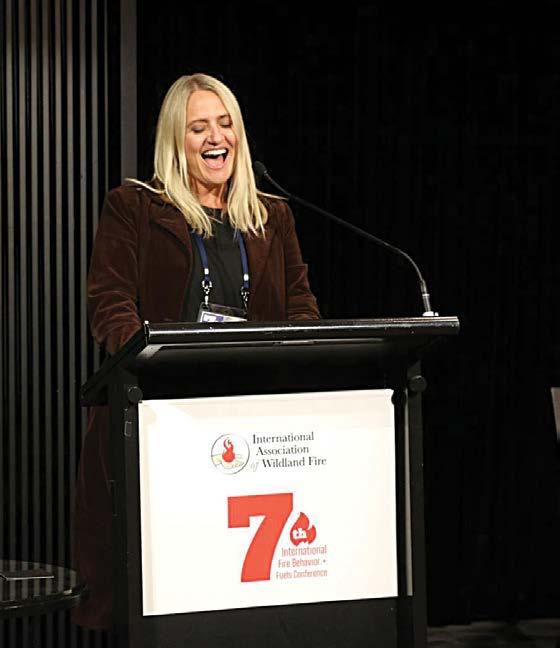
IAWF Board Member and Manager, and CFA Manager, Research and Development, at the conference closing.



Attendee feedback highlighted the popularity and relevance of the following:
targeted workshops and field trips, especially a prescribed burning tour of the ACT hosted by ACT Parks and Conservation Service, where local First Nations representatives shared their perspectives on cultural burning as opposed to prescribed burning, and the importance of getting people back on Country, as well as the challenge of managing flammable areas as Canberra’s wildland and regional–urban interface grows
being connected with the fire science community, learning from each other and networking with new people
the keynote speakers and panels showcasing intersectional research, themes, and issues facing the fire science, emergency and disaster sectors, broader scientific and resilience spaces
the quality, diversity and breadth of the scientific presentations, those who shared them, and the people in the room who elevated, expanded, and built on that knowledge.
Keynote presentations and other select sessions will be available at www.iawfonline.org/ or https://canberra. firebehaviorandfuelsconference.com/
The Fire Behaviour and Fuels Conference was hosted by the International Association of Wildland Fire (IAWF), a professional membership association for wildland fire professionals. IAWF is an independent organisation whose membership includes experts in all aspects of wildland fire management, and whose independence and breadth of global membership expertise offer a neutral forum for the consideration of important, at times controversial, wildland fire issues.

The rate of change in mapping and geospatial technology has been significant over the past few decades. Fire and emergency service agency mobile apps that display public information and warnings to communities in real time continue to grow in popularity, and spatial datasets are increasingly used in operational and strategic decision-making.
The Emergency Management Spatial Information Network Australia (EMSINA) has been growing and evolving alongside this technology. Formed in October 2002, EMSINA is a vibrant and active group of 80 spatial practitioners in the emergency management sector.
A forum for ideas
EMSINA has also been a longstanding feature of the annual AFAC Conference and Exhibition, and in 2024 is marking 15 years of partnering with the premier emergency management event. Its involvement includes the annual EMSINA workshop on the Professional Development Program and the EMSINA stall in the Exhibition Hall. Importantly, the latter allows for direct engagement with emergency management professionals to share information, ask questions, and find directions for future EMSINA workplans.
“It’s a forum where we can farm for ideas and feedback,” said Steve Forbes, ACT SES Acting Chief Officer and EMSINA life member.
“Conversations that we have at the
conference lead into future projects. It’s also where we can share our resources and projects, and support implementation across the sector.”
Delivering practical tools
A number of significant projects have been delivered through EMSINA with wide-ranging benefits for the emergency management sector.
One example is the Australasian All Hazards Symbology Set, sponsored by the Intergovernmental Committee on Surveying and Mapping (ICSM) and the Australia New Zealand Land Information Council (ANZLIC), and supported by EMSINA. The project developed a consistent All Hazards Symbology Set (AHSS) for adoption by emergency management agencies across Australia and New Zealand.
Another more recent example is the National Bushfire Boundary Data project, a nationally aggregated and harmonised bushfire product. EMSINA has partnered with a range of government agencies, industry and research bodies to access, design, develop, and deliver bushfire boundary related datasets.
EMSINA co-Chair and Executive Manager, Data Sciences and Advanced Capability, for Queensland Fire and
Emergency Services, Simon Webster, said these types of projects are only possible when there is communication and consistency between agencies.
“Once we are speaking the same language—about our data, our systems, and to each other—that’s when we start to see that national impact and influence,” he said.
Collective effort is the key Rob Kirwood, EMSINA co-Chair and GIS Team Leader at Forestry NSW, said that when technology moves so quickly, staying connected and consistent through EMSINA is crucial to future success.
“Without these networks, the sort of developments we’ve seen over the years would be a lot harder. As a collective, the membership of EMSINA has pushed for the spatial industry in Australia significantly, and the benefits are enormous,” he said.
Mr Kirwood encouraged all AFAC24 delegates to reach out to EMSINA during the event to learn more.
“There is so much change, and so much for us to share what we have, but we really want delegates to teach us what we don’t know, or tell us what they need, or where we should look next. That’s the real value for us,” he said.
EMSINA presents ‘Geospatial intelligence tools in emergency management’ workshop, AFAC24 Professional Development Program, 9 am to 3 pm, 6 September 2024, ICC Sydney. Registrations now open: www.afacconference.com.au/professional-development-program24
For more information about EMSINA’s resources, workplans, and membership, visit: www.emsina.org/

Technical Officer, FPA Australia
As winter sets in, bushfire consultants stay busy helping people keen to move into new homes. Many are new to bushfire-prone areas, often seeking a tree change without fully considering the bushfire risks–a unique opportunity for bushfire planning and design (BPAD) consultants to share knowledge.
First, we want them to understand the risk. Explain bushfire planning overlays, the effect of surrounding landscapes, and how nearby vegetation can impact their property.
Describe what to expect from a fire, local fire brigade response capabilities, how bushfires can destroy a house, and—perhaps most importantly—the need for a bushfire safety plan.
It is best to paint a realistic picture for people, explaining that a bushfire is never what they expect, and why the sights and sounds in an emergency can change their behaviour.
Having a plan addresses important human behaviour aspects, and It is all about decisions.
We make decisions every day, but in bushfires, decisions come with risk. It is the classic fight-or-flight scenario and responses vary from person to person.
Another common response is ‘freeze’. In an emergency, decisions that would typically be routine become difficult. For example, choosing a route
from one place to another during a bushfire–with new sights, sounds and panic from others–can quickly become overwhelming, complicating the process of selecting a safe evacuation route.
Another human behaviour risk in emergencies is overestimating our ability to cope with a scenario and the accompanying emotions. It is why people drive through floodwaters or fire areas.
We naturally think it will not happen to us or, if it does, it will not be that bad and we can deal with it. In reality, emergencies are unpredictable, and conditions can escalate rapidly. The belief that ‘it won’t be that bad’ can quickly expose us to risks that jeopardise our safety and the safety of others.
There is also a physiological response we also need to be aware of. In a bushfire, heat exhaustion and heat stroke play a huge role in our ability to survive.
It is the early stages of a heat- related illness that can impact our physical well-being and increases the workload on our heart.
You quickly realise you are not up to it, and your body takes control, further complicating decision-making.
A bushfire safety plan removes layers of thinking. Plans are made in calm times and then, when needed, plans are there, setting ground rules on what to do and the procedures to follow. They tell us who to call, what to pack, what to wear, when and where to go, how to get there, and how to prepare ourselves and our properties.
While there are several ways to mitigate these risks, having a plan is the most effective.
A bushfire safety plan removes layers of thinking. Plans are made in calm times and then, when needed, plans are there, setting ground rules on what to do and the procedures to follow. They tell us who to call, what to
pack, what to wear, when and where to go, how to get there, and how to prepare ourselves and our properties.
The last point—preparation—is crucial because, despite plans to leave early, unexpected circumstances might force us to stay. Preparing the property to give it the best chance of surviving a fire is essential as it could be our necessary shelter in a worst-case scenario.
It is helpful here to explain the significance of a Bushfire Attack Level rating and what it means, and the importance of maintaining it—it is more than just a number.
It is easy to provide too much information here, but I recommend starting a plan by visiting local emergency agency websites that offer planning templates. Also, research the local community and its bushfire history. Once you have a plan, practice it and run different scenarios to see what works.
However, while developing that plan, there are a few things to do right now:
1. Become a weather warrior: During the fire season, check weather forecasts daily for the next four days. Any signs of significant weather (high temperatures, winds, low humidity) should be a trigger to action your plan.
2. Emergency apps: Download the app in your area, set up alerts, and watch zones if possible. Keep an eye on fire danger ratings and remember that in emergencies, phone data and power can be affected, so do not rely solely on apps. Use other sources like TV and radio, and keep battery backup options to charge phones and other necessary equipment.
3. Community unity: Inform family and friends or vulnerable people in the community about any potential risks. Communicating your plan, the weather forecast, a fire danger rating or a nearby fire can help everyone be better prepared.
These three simple steps can be integrated into a daily routine while developing a comprehensive bushfire plan, and the engagement contributes significantly to making communities more resilient to emergencies.
FPA Australia’s first Bushfire Conference—Ignite Change in 2024— attracted more than 120 attendees.
Held on 16 and 17 July in the Perth CBD, the event was opened by Jodie Hanns MLA.
Delegates heard from experts on a variety of topics, from risk and bushfire mapping to environmental protection, compliance and insurance, the use of drones in bushfire mapping, and more.
Following are highlights from both days of the event.
Bushfire ‘minimum compliance’ to ‘best practice’
Justin Leonard, Research Leader in Bushfire Adaptation for CSIRO, discussed the pros and cons of the two approaches.
Best practice, he argued, was not just about good home design and having a backup plan—it should incorporate having a survivable place to retreat to if your house was alight.
“Think at the beginning where you want to be at the end,” he said. “Best practice is vulnerable—you only need one missed link for it to fall over.”
He challenged the audience: “What could you do to be a best practice actor?”
Mr Leonard also pointed out the limitations of Australian Standard AS 3959 Construction of buildings in bushfire-prone areas, and queried the current approach to design for homes in bushfire-prone areas. Typically, the approach only addressed the outer skin of a structure and did not consider the entire built system that a structure represents. By thinking holistically—considering framing, cavities, and subfloors—fire risk could be potentially reduced at the same time as lowering costs.
CSIRO has published an explainer on preparing a home for bushfires: www.csiro.au
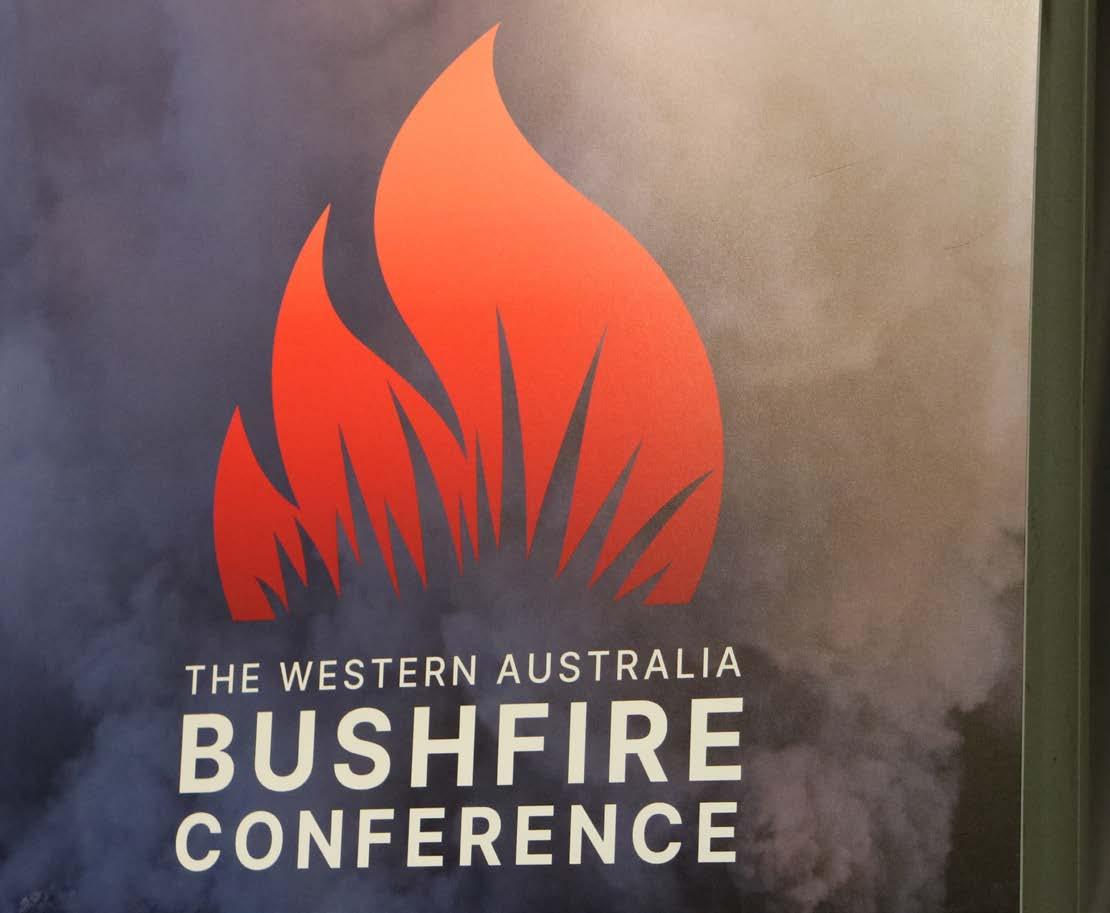


Drones a powerful tool for bushfire management
Gary McMahon (Ecosystem Solutions) made a compelling case for the use of drones for bushfire mapping.
The benefits, he argued, included improving awareness and perspective of landscapes that could only be accomplished from the air:
Drones could assist with vegetation classification, particularly in hard-toreach sites or sites that were risky to visit in person.
Orthomosaics—which stitch together overlapping photographs to produce huge, map-like images—also have enormous utility in bushfire management planning.
However, drones also come with constraints and limitations, including:
licensing, permit and logbook requirements
the risk of bird attack or birdstrike
legal constraints and CASA
restrictions that prevent overflight of certain properties
physical constraints that prevent large drones from being carried on commercial flights
potentially costly initial investments (although prices are decreasing).
Despite the limitations, it is clear that unmanned aerial vehicles have incredible potential to assist bushfire planners into the future.
For example, drones could be configured with new and innovative technologies such as LIDAR, which has the capability to produce 3D terrain models by penetrating through canopy.
FPA Australia update: focus on education and compliance
John Collie (CEO) and Dr Maria Kornakova (Manager, Bushfire Services) updated delegates on FPA Australia’s activities in the bushfire space.
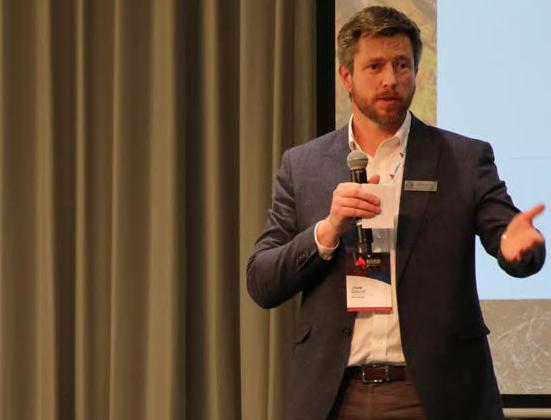
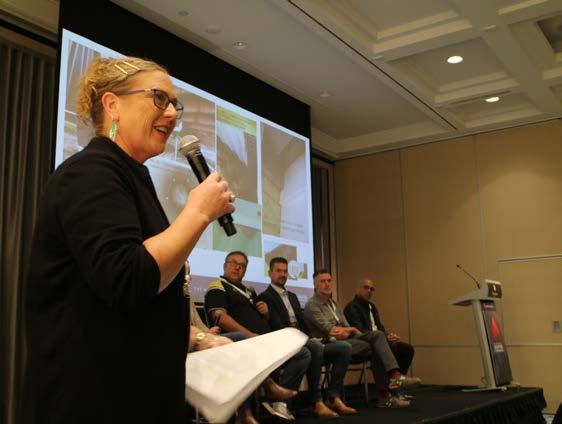

Key initiatives include:
Education and training: the organisation is introducing WA workshops for NCC 2022 and is also in the process of introducing a diploma for level 2 BPAD practitioners, which will be aligned with WA’s state planning policy. Multi-day Bushfire Attack Level (BAL) and bushfire awareness courses are also upcoming.
Compliance: there have been 17 issues raised regarding practitioners in WA in the 12 months to July 2024, and one practitioner’s accreditation has been terminated for two years. Common complaints included working outside accreditation, substandard work, incorrect vegetation assessments, and failing to visit a site to complete a report.
The morning of day 2 closed out with a powerful panel session addressing the challenges of building to BAL specifications.
Moderated by Kathryn Kinnear (Bio Diverse Solutions), panellists included Shahid Malimar (TBA Firefly), Justin Leonard (CSIRO), Cliff Kearns (Cachet Homes), Jim Walters (Wildwood Carpentry), and Julie de Jong (H+H Architects).
Key takeaways:
There is a need for consumers to be educated about the limitations BAL requirements and AS 3959 can impose on home design.
The industry is frustrated by constantly changing standards, how this impacts design considerations, and how it can reduce the availability of compliant building products. Some builders have abandoned constructing BAL-rated housing.
Meeting client expectations while conforming to BAL requirements is often challenging. This is particularly so if a client’s financial circumstances change.
Design and construction are not a ‘set-and-forget’ solution for bushfireresistant housing; homeowners need to take responsibility to actively maintain their homes and manage bushfire risk.
David Boverman (Helping Hands Planning & Design) outlined how NCC 2022 Spec 43 changes would impact industry, as it involved shifting from a prescriptive code to a performancebased building code.
In summary:
Prescriptive codes are reactive, ticka-box regimes: if it doesn’t fit, you can’t build it. The philosophy behind these are: ‘What does the code say?’
Performance-based codes can be proactive but are process-heavy: you can build it so long as the processes are followed. The philosophy behind these are: ‘What do you want to achieve?’
Mr Boverman outlined some of the challenges involved in shifting from prescriptive to performance-based codes:
there is a shift in power and authority from regulators to private certifiers; sometimes this is resisted
there is a shift in emphasis, from ‘design solutions and outcomes’ to ‘ground rules for testing designs’

the market typically does not support the time and effort required for performance-based design and assessment processes.
Moderated by Dr Maria Kornakova (Manager, Bushfire Services, FPA Australia), the panellists represented a host of government agencies, including the Department of Planning, Lands and Heritage (Jackie Holm), the Department of Fire and Emergency Services (Murray Carter and Richard Trinh), and the Department of Energy, Mines, Industry Regulation and Safety (Mark Riordan and Paul da Costa).
Key takeaways:
Government has a desire to learn from previous bushfire incidents.
Legislative systems currently do not integrate, and there is acknowledgement this can cause difficulty.
Change is on the way, in the form of a combined Emergency Services Act.
There is a need to strengthen mapping and then form a position in how this relates to planning policy.
FPA Australia thanks delegates, exhibitors and sponsors for making the event a success. Sponsors for the Bushfire Conference were:
◆ Diamond Sponsor: Firefly
◆ Emerald Sponsors: Bushfire Roller Shutters and Windsor Management Insurance Brokers
◆ Ruby Sponsors: Bushfire Control, Kingspan Water Tanks
◆ Supporting Partner: Business Events Perth
◆ Foundation Partner: Fiona Wood Foundation

The exponential growth of data centres has led to an escalating demand for robust fire protection strategies within these facilities. This demand is further fuelled by the widespread adoption of lithium-ion (Li-ion). However, while li-ion batteries offer numerous advantages, they also pose unique fire risks due to their chemistry. The need for diverse and specialised fire protection strategies tailored to mitigate these risks has become imperative.
Fire safety in data centres requires a multifaceted approach, encompassing advanced detection systems, suppression technologies, and stringent fire prevention measures. As the data centre landscape continues to evolve, so too must the strategies employed to safeguard these critical infrastructures against the ever-present threat of fire.

Lithium-ion (Li-ion) batteries have become ubiquitous in our lives due to their high energy density, low space requirements, and environmental friendliness. However, thermal runaway poses a significant hazard for lithiumion energy storage systems, which can occur due to various factors such as overcharging or overvoltage.
The heat generated from a single cell fire has the potential to trigger thermal runaway in adjacent cells. In
large lithium-ion battery energy storage systems (LIB-ESS) where racks are closely positioned, this phenomenon can escalate into a cascading thermal runaway, impacting the entire rack.
This scenario is particularly pertinent in some of the hyperscale data halls within data centre facilities, where battery backup units (BBU) and battery cabinets are housed within racks positioned closely together. With the increasing demand for data centre expansion, there is a corresponding rise in density per rack, leading to higher IT loads (see Figure 1).
Selection of an effective automatic fire suppression for the fire associated with Li-ion batteries is possibly the most challenging part of the fire protection design of such systems.
There are four basic fire suppression approaches: isolation, smothering, cooling, and chemical suppression method. However, Li-ion battery fire is special.
Some cathode materials can release oxygen at high temperature, meaning Li-ion battery fire does not require external oxygen. Catastrophic jet flame and gas explosion may occur in fires involving large Li-ion battery packs, making fire suppression challenging [Ref 1].
Fire suppression methods should suppress any Li-ion battery fires and control battery temperature. If not sufficiently cooled, thermal runaway
reactions may continue and the battery may reignite; this is a major challenge for Li-ion battery fire suppression systems. Adjacent cells may also undergo thermal runaway if heat propagation from the initial cell is not controlled.
Currently, no one fire protection approach alone is a solution for Li-ion battery-based fires. DNV GL’s testing also indicates that all extinguishers have benefits and drawbacks. In fact, all the extinguishers tested (i.e. by DNV GL) knocked out the flame; however, the ideal battery fire extinguisher would be both highly thermally conductive and highly electrically insulating.
Water has been historically recommended because of its ability to cool. However, the high conductivity of water may cause the short-circuiting of cells and increase the generation of off-gases such as carbon monoxide, hydrogen fluoride and hydrogen. Also, a high volume of water is required to cool the cells below the critical temperature to prevent thermal runaway propagation. Another study [2] found water spray can effectively extinguish Li-ion battery fires and reduce the maximum surface temperature of batteries. With sufficient volume of water spray and high contact efficiency, water spray can inhibit thermal runaway propagation. In a DNV GL program [3] [4], the results showed water demonstrated the
best ability to cool and maintain cool temperatures on the battery (Figure 2).
The most popular water-based fire suppression system is a fire sprinkler. Typically, the office/administrative portion of a data centre facility (Class 5) is designed for wet conventional sprinkler systems, and the data halls and associated mechanical and electrical rooms are designed for pre-action sprinkler systems. However, the sprinkler in office areas may also be pre-action. On the other hand, sprinkler systems in mechanical rooms can also be designed to use wet systems. This varies on client preference.
The design of the pre-action sprinkler system can be either single or double interlock, depending on client preference. However, it is important to note that in New Zealand, only singleinterlock sprinkler pre-action systems are permitted for a data centre facility.
While gaseous agents can penetrate to deep-seated battery fires, unlike water-based systems, the poor cooling properties of gas suppression systems as a standalone fire suppression, in general, make them ineffective in preventing thermal runaway propagation.
On the other hand, gaseous suppression is effective in preventing flaming fires which, in turn, mitigates thermal runaway propagation from direct flame application to other batteries. Gaseous suppression also prevents fires in cables and other equipment in the racks and cable trays from causing a thermal runaway scenario in Li-ion
batteries that may be in close proximity. As per FM Global data sheet 5-33, gaseous protection systems are not recommended for LIB-ESS applications for the following reasons:
Efficacy relative to the hazard: As of 2019, there was no evidence that gaseous protection is effective in extinguishing or controlling a fire involving energy storage systems. Gaseous protection systems may inert or interrupt the chemical reaction of the fire, but only for the duration of the hold time. The hold time is generally ten minutes—not long enough to fully extinguish a LIB-ESS fire or to prevent thermal runaway from propagating to adjacent modules or racks.
Cooling: FM Global research has shown that cooling the surroundings is a critical factor to protecting the structure or surrounding occupancy because there is currently no way to extinguish a LIB-ESS fire with sprinklers. Gaseous protection systems do not provide cooling of the LIB-ESS or the surrounding occupancy.
Limited discharge: FM Global research has shown that LIB-ESS fires can reignite hours after the initial event is believed to be extinguished. As gaseous protection systems can only be discharged once, the subsequent reignition would occur in an unprotected occupancy. If there are no Li-ion batteries within data halls, gaseous suppression system could also be considered as a fire suppression method.
Generally speaking, due to the advantages and disadvantages of each suppression system, it appears a multilayer protection strategy that includes early detection and suppression may be the best alternative. A combination of protection layers capable of suppressing battery fire, preventing propagation of thermal runaway, and managing the concentration of resulting off-gas may be the best solution for the Li-ion battery fires.
In this regard, further studies by DNV GL have shown that residual heat between batteries can lead to delayed cascading and prolonged extinguishing for battery module. This highlights the importance of cascading protections between cells and inter-cell cooling in battery modules.
In the event of a single cell fire, cascading protections should limit propagation to other cells. First responders may still respond to a call reporting smoke, but in the best-case scenario the fire has consumed itself and burned out. If a fixed suppression agent is installed within an enclosed environment containing the single failed battery cell, it may suppress flammability in the enclosed space. The use of water may be unnecessary at this point unless the fire has progressed.
A key issue to be addressed is how the first responder is able to determine if this single cell fire has been mitigated or if further action (and water extinguishing) is needed, and hence some system health information, an emergency response phone line, or some other means to gain information on system health is a need that requires industry engagement to overcome.
Therefore, what DNV GL recommends is:
Stage 1: If a system can limit cell cascading, a gas-based suppression system may be considered for the first stage of firefighting to extinguish a single cell fire and prevent flashover in a contained environment.
Stage 2: If temperature continues to rise or if an increasing level of smoke and gas is detected, forced ventilation and water extinguishing should be considered to cool the system and prevent further propagation of fire.
Stage 1 provides an opportunity for avoiding collateral damage and total asset loss. Stage 2 provides a backstop for a situation when more than one battery cell is on fire.
It is important to note employing a cascading approach and installing two automatic fire suppression systems in data halls is often avoided by clients due to the associated capital and operating expenses.
The use of different codes and standards is very typical in design of the fire sprinkler system. For example, Fire and Rescue NSW (FRNSW) requires enhanced water supply and enhanced sprinkler protection, where Li-ion batteries are located. Currently, gas suppression as a standalone is not the FRNSW preference.
In the absence of strategies in the National Construction Code (NCC) and Australian Standards (acknowledging clauses E1D17 and E2D21 of NCC 2022), international codes and standards such as NFPA and FM Global, manufacturers’ guidelines and the latest literature review findings can be referred to in the design.
In a data centre facility the most demanding fire sprinkler scenario would be the fire sprinkler activation within the data hall.
Some developers of hyperscalers (large-scale data centres that specialise in delivering massive computer power and storage capacity) have conducted fire and explosion testing in accordance with UL 9540A. In this scenario, normally the sprinkler discharge density is equal to Hazard Group I or II of NFPA 13 and above what is required in AS 2118.1.
NFPA 855 recommends sprinkler systems for ESS unit (groups), with a maximum stored energy of 50 kWh,
shall be designed using a minimum density of 12.2 mm/min based over the area of the room or 230 m2 design area, whichever is smaller.
In accordance with updated FM Global data sheet 5-32, where Li-ion battery BBUs are installed in a server rack as a distributed power system, the following conditions should also be met:
maximum power capacity of 20 kWh per server rack as a distributed power configuration no more than two shelves containing BBU modules located together in the same area of the rack
aisle spacing between server rows at a minimum of 1.2 m
ceiling height is a maximum 9 m.
If all the above conditions are met, the discharge density of 8 mm/ min over 320 m2 for double-interlock sprinkler pre-action can be applied. This area reduces to 230 m2 for a single-interlock system (Figure 3).
If all the above conditions are met, additionally FM Global requires vertical barriers to be installed within server rack rows. Barriers are to be located after every third rack along the entire length of server rows. A minimum 20-gauge (0.9 mm) solid sheet metal should be used for the vertical barriers on the side of every third rack to limit the fire spread.
If, for the scenario of BBUs within the racks, the conditions mentioned above are not met, and the server racks with BBU exceed the maximum capacity of 20 kWh per rack, the requirements of FM Global 5-33 should be considered.
In accordance with FM Global 5-33, the sprinkler system with discharge
density of 12 mm/min over the room area is recommended. This may end up having different fire compartmentation within the data hall or giant water supply requirements, and needs to be discussed by the stakeholders in detail on a project.
All the scenarios above result in enhanced water demand for the sprinkler compared to AS 2118.1 and meet the FRNSW requirements.
Fire hydrants are a necessary feature for data centre facilities and their installation depends on the site layout, which may include external, internal or both configurations. The design of the fire hydrant system adheres to AS 2419.1 standards as well as the specific requirements of the local fire brigade.
Fire hose reels are typically omitted from Class 7b (data hall) areas, based on a performance-based fire engineering solution. This precaution is taken due to the potential risk of water pipe leakage within the data halls, where critical electrical equipment is housed.
The duration of water supply is variable and contingent upon the specific project requirements and the requirements set forth by the fire authority, as well as the design specifications of the fire sprinkler system. Water supply duration and storage capacity can range from 60 minutes, in accordance with FM Global standards, to 90 minutes, or even up to four hours, as per the requirements of FRNSW. While AS 2118.1 allows for
Detection
Double knock
Double knock
Single knock
Single knock
flexibility in fire tank capacities under certain circumstances, it is recommended not to reduce tank capacities for data centre facilities more than is practical.
If the town’s main water supply is capable of meeting fire service demands, it may be utilised. However, it is worth noting that some clients may opt for system redundancy by installing on-site storage tanks to ensure continued operation in case of any disruptions.
Furthermore, depending on the mechanical cooling system, peak water flow demand for cooling should also be considered in evaluation of the town’s main and fire water storage requirements.
Depending on factors such as site layout, rise in storeys, and effective height, various fire sprinkler design approaches may be recommended.
In the case of a high-rise data centre facility, a combined fire hydrant and fire sprinkler system may be specified to optimise fire protection. In this scenario, sprinkler pre-action valves are located in the fire stairs, typically.
According to the NCC, for a separate fire sprinkler and fire hydrant system, sprinkler valves are required to be located in a room or cupboard with direct access to the open space. However, careful consideration must be given to the placement of pre-action sprinkler valves, particularly in data centre facilities, as one of the critical aspects of pre-action systems is ensuring timely water delivery to the furthest sprinkler head.
AS 2118.1 stipulates a requirement of 60 seconds for water delivery to the most unfavourable sprinkler head. If the location of the sprinkler valve is too distant from the area being protected, meeting this requirement may prove challenging and result in a non-compliant design. In such cases, addressing the location of sprinkler pre-action valves may necessitate a performance-based fire engineering solution.
Sprinkler
Double interlock
Single interlock
Double interlock
Single interlock
The fluid delivery time requirements may be different (i.e. 30 seconds or 50 seconds) using NFPA 13 or FMG 5-32. The design engineer should pick the right requirements. Also, it is recommended UL-listed software be utilised at the design phase to conduct the fluid delivery time calculations.
The fire detection system serves as the cornerstone of fire protection within a data centre facility. The primary factor influencing the choice of the minimum fire detection system is the criteria outlined in AS 1670.1, with particular emphasis on the air exchange rate.
Cooling methodologies employed in standard data centre facilities often involve significant air circulation within the data hall, notably through cold and hot aisle configurations. This design typically results in air exchange rates far exceeding 60 per hour, necessitating the selection of multiaspirating smoke detectors (MASD).
The class of sensitivity and spacing of the sampling points for any MASD system within a data hall facility shall be selected based on Table 5.1.5 of AS 1670.1. The calculations shall be carried out at the design stage to determine the alarm thresholds and in particular ‘Fire 1’, in which the alarm system shall be activated. These calculations shall be completed and verified by the manufacturer of the MASD system.
In accordance with the client preference, either one or two detection activations may be required for the activation of the fire suppression (gas, water mist, or pre-action sprinkler).
Table 1 illustrates the options of the fire detection interlocks with the fire sprinkler pre-action.
This article offers a brief overview of various fire protection system designs tailored for data centre facilities. The design of the fire protection system can vary depending on specific data centre
Action (pre-action valve open and charge the system with water)
Two detectors go off AND sprinkler head bursts
Two detectors go off
One detector goes off AND sprinkler head bursts
One detector goes off
SOURCE:
requirements and compliance with fire-related codes and standards.
Typically, designing fire systems for data centres entails extensive coordination with various services and disciplines. Factors such as the placement of Li-ion batteries (whether external in kiosks or internal in a room), site layout, building footprint, diesel storage, and generator layout are just a few examples of elements that can impact the design of the fire protection system.
The power, energy supply and cooling techniques employed in data centre facilities are subject to continuous evolution (such as immersion cooling). These technological shifts significantly impact the selection and design of fire protection systems within data centres. Consequently, fire protection system designs must adapt and evolve to effectively accommodate these changes.
1. Sun J, Mao B and Wang Q, 2020, ‘Progress on the research of fire behaviour and fire protection of lithium ion battery’, Fire Safety Journal, 120, 103119.
2. Zhang L, Duan Q, Liu Y, Xu J, Sun J, Xia H and Wang Q, 2021, ‘Experimental investigation of water spray on suppressing lithium-ion battery fires’, Fire Safety Journal, 120, 103117
3. DNV GL, 2017, Considerations for ESS Fire Safety, Report No. OAPUS301WIKO, Rev 3.
4. DNV GL, 2019, Quantitative risk analysis for battery energy storage sites, Rev 2.
5. Ghiji M, Novozhilov V, Moinuddin K, Joseph P, Burch I, Suendermann B and Gamble G, 2020, ‘A review of lithium-ion battery fire suppression’, Energies, 13(19), 5117.
6. Sebastian R, 2021, A review of fire mitigation methods for Li-ion BESS, Baker Engineering and Risk Consultants, Inc.
7. Wang Q, Mao B, Stoliarov S and Sun, J, 2019, ‘A review of lithium ion battery failure mechanisms and fire prevention strategies’, Progress in Energy and Combustion Science, 73, 95-131.
8. Hurley M et al. (eds.), 2016, SFPE Handbook of Fire Protection Engineering, Fifth Edition.
9. AS 2118.1-2017 Automatic fire sprinkler systems, Part 1: General systems


“The
Patrick Markos Sales and Service Technician

MARK WHYBRO AFSM
Home Fire Sprinkler Coalition Australia
For 150 years, automatic fire sprinklers have been a safe, reliable, life-saving technology that remains the single most effective and readily available fire protection measure for people and their property.
Australia’s National Construction Code mandates sprinklers across virtually all classes of building, a notable exception being Class 1 homes— standard one- or two-family dwellings, sometimes in rows or terraces— where the overwhelming majority of preventable fire fatalities occur. Different types of water-based fire protection are used across residential, retail, commercial, and industrial buildings, as well as critical infrastructure and high-hazard facilities, like petrochemical plants. So why are water-based fire systems to protect against bushfire seen to be so problematic?
Fire behaviour in internal compartment fires, even those in high-hazard facilities like high-stacked warehouses, is well-researched, arguably ‘settled’ science. How water is used to mitigate this internal fire risk is always innovating and improving, based on national and international research. Sophisticated computer modelling and data collection from live-fire tests increase our understanding of compartment and structure fires, and are used to frame better requirements in codes and standards, and develop better products.
Bushfires, however, are a far more complicated challenge. Their extreme variables and characteristics are comparable to the most severe built environment fires in terms of megawatts per metre, but the sheer scale of a bushfire, the complexity added by wind, embers, and mixed fuels at the bushland-urban interface create a very different fire protection challenge. A challenge that is compounded by the need to maintain household fire protection features and equipment, which experience tells us is not always perfect when left to the householder: think smoke alarms.
Can we complement passive fire protection?
Historically, the emphasis in Australian Standards, particularly AS 3959 Construction of buildings in bushfireprone areas1, has been on passive fire protection—the bushfire-proof box—as can be seen by the absence of waterbased fire protection options/provisions in the proposed updated standard. AS 3959 even notes the potential use of fencing and screen walls to reduce exposure of a building to embers, radiant heat and flame contact—but not water. The use of water to protect buildings should be included in the scope for future revisions, given the standard’s objective: is to provide specifications for the construction of buildings in bushfire-prone areas to reduce the risk of ignition from burning embers, radiant heat or flame, and improving the resilience of the building to bushfire attack.
Water-based systems will never be able to extinguish a major bushfire front, but extinguishment is not the goal. The aim is to protect a home until the fire front passes, using a safe, reliable, cost-effective, and fit-for-purpose domestic system that allows householders to leave early, confident their home is going to protect itself. The question worth asking is whether we can design a waterbased system to complement existing required passive measures to better protect a building against bushfire impact? Or is it all too hard?
The good news: we have an Australian standard that details a water-based bushfire protection system: AS 5414-2012 Bushfire water spray systems2. The even better news is Standards Australia has approved the standard’s review and revision, providing a golden opportunity to update the existing provisions in line with contemporary science and knowledge.
This review is timely, as climate, fire, and emergency management experts continue to predict a future with more regular, more severe, and more sustained natural disasters, including bushfires. Designing buildings to be more resilient in a changed climate

needs to include all considerations, since there is a reasonable expectation that what worked in the past may not be enough in the future.
The current standard for bushfire sprays has room for improvement, not least of which is guidance is provided only for buildings assessed as Bushfire Attack Level (BAL) 19. The review should look at the possibility of scaling this for higher and lower BALs, since community compliance with the existing design appears to be low.
A literature review undertaken by Dr Alan Green (University of Wollongong), found:
No sprinklers appear to have yet been tested to AS 5414, so the homeowner is unable to design a system that complies with the standard without conducting their own water dispersion tests …3
The standard itself provides a disclaimer underlining the challenge of configuring a water-based system to protect a building, even one designed to fully complement passive protection requirements. AS 5414-2012 includes a realistic disclaimer:
It should be borne in mind that the measures contained in this Standard cannot guarantee that a building will survive a bushfire on every occasion. This is substantially due to the degree of vegetation management, the unpredictable nature and behaviour of fire, and extreme weather conditions.
Technology has also moved on in the 12 years since the Standard was published, meaning there may be
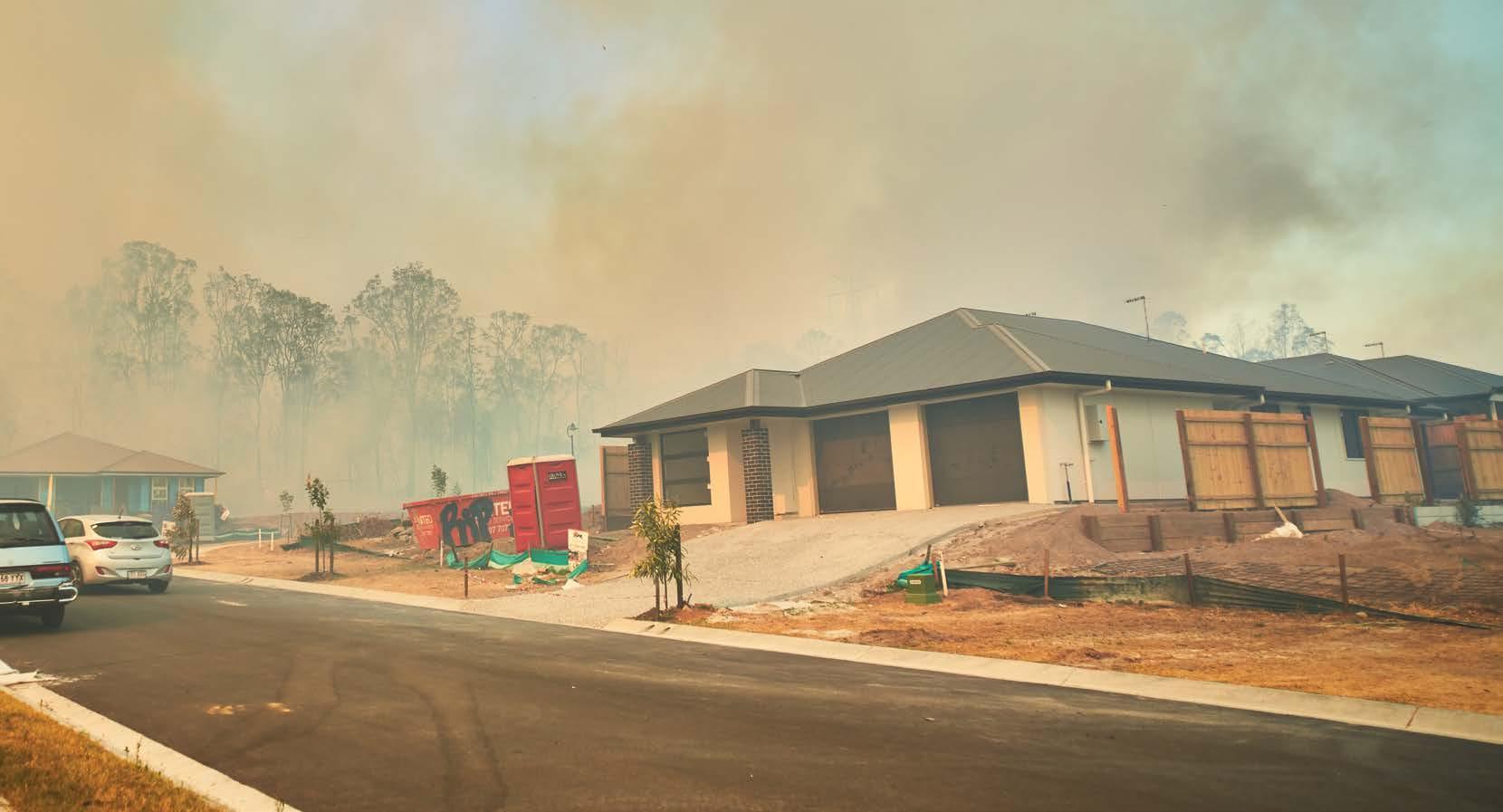
water delivery devices and systems to resolve any historical mistrust of active, water-based systems.
Another knowledge gap identified by Dr Green in his work is the need to study which type of waterbased system is best to protect against bushfire impact. Employing available products and equipment, water application could be through drenchers, rotary or pendant sprinklers, misting or wall-wetting heads.
Determining the most effective means of delivery is linked to a further critical parameter—efficiency. Where do you locate water delivery points to maximise protection, while minimising the use of your limited, valuable water?
Filling the knowledge gap
A cross-disciplinary team of academics and researchers from Western Sydney University—led by Professor Swapan Saha and Associate Professors Payam Rahnamayiezekavat, Pejman Sharafi and Sean Jin and Dr Kamrul Hassan—has launched a 12-month quest to find some answers.
The project is notable for the strong industry support it has generated, with backing from industry leaders, such as Johnson Controls, Wormald, Reece Fire, Forest & Wood Products Australia, Prime Pumps, Viking Sprinklers, FPA Australia, AFAC, and NSW Rural Fire Service—and Home Fire Sprinkler Coalition Australia. Contributions include cash, equipment, and, just as importantly, in-kind support from technical subject matter experts in fire sprinklers, hydraulics, and bushfire. The project is part of WSU’s partnership
in the UNSW-led Australian Research Council Research Hub, which will also provide funding.
Sophisticated computer modelling will occupy a good proportion of the project team’s efforts, ultimately progressing to the more expensive physical fire testing of water application on selected home building products. A research assistant has been appointed by WSU to start putting in place the project’s governance structure and, in close collaboration with our partners, confirm our scope.
The findings and recommendations of this study aim to inform the review of AS 5414, so Standards Australia and the appropriate technical committee are key stakeholders. Further independent peer review is also available through FPA Australia’s generous offer of its bushfire Technical Advisory Committee, led by Dr Maria Kornakova and chaired by David Boverman.
The 12-month project is seen as the first stage of a much larger project being championed by the Home Fire Sprinkler Coalition Australia, its partners and supporters—a feasibility study of an integrated internal—external water-based fire protection system for bushfire-prone buildings, with a focus on those who live in regional, rural, or remote areas.
A 2023 study by Fire and Rescue NSW4 highlighted, unsurprisingly, that the further your home is from a fire station, the worse the outcomes of a fire are expected to be. If water-based systems are to be more commonly used in response to bushfire risk, the comprehensive range of design
features need to be investigated, for example, storage and supply of water; pumps; activating and deactivating the system; cost implications and offsets; servicing and maintenance; codes and regulation etc.
Australian research also shows that a significantly higher number of preventable fire fatalities are the result of typical home fires, rather than bushfires—so can water-based fire protection systems, inside and outside, protect both life and property? Stay tuned.
Mark Whybro AFSM is Chair of the Home Fire Sprinkler Coalition Australia (HFSCA), and Adjunct Fellow at Western Sydney University’s School of Engineering, Design and Built Environment.
1 Standards Australia, 2024, Public comment draft of AS 3959-202X Construction of buildings in bushfire-prone areas
2 Standards Australia, 2012, AS 5414-2012 Bushfire water spray systems
3 Green A and Cooper P, 2022, Bushfire Sprinkler Systems for Increasing Bushfire Resilience of New and Existing Residential Buildings – Phase 1 Final Report, University of Wollongong, Forest & Wood Products Australia.
4 Pooley K, Lam R and Duong P, 2023, FRNSW Adverse Structure Fire Outcomes 2016–2021, FRNSW Fire Investigation and Research Unit.
The aim is to protect a home until the fire front passes, using a safe, reliable, cost-effective, and fit-forpurpose domestic system that allows householders to leave early, confident their home is going to protect itself.

PAUL WATERHOUSE
FPA Australia
“Don’t vote—it just encourages the b_____”
PJ O’Rourke
For many of us, politics is an infrequent blood sport.
For the vast majority, though, politics is just voting—a tiresome exercise, waiting in line to get your name marked off, only to indicate a preference for someone you don’t know and whose policies you couldn’t name, so that you don’t get fined.
We all swing back and forth on this. Sometimes we’re well informed, sometimes we’ve never even heard of our local candidates.
And it’s often difficult to know what are ‘core’ or ‘non-core’ promises, making it even harder to work out where the different candidates stand.
We then sit back to watch the results play out over the ensuing few years, before we have to go through the rigmarole all over again.
If we support a ‘side’, we’re bound to be either happy or disappointed by the results.
If we don’t, we’ve probably only turned out because the law says that we have to, with only election snags as compensation.
Despite this, voting continues to be important—you may be one vote in the system, but a lot of single votes constitute a swing and can see one party or the other rise to the top.
How you choose to vote helps to shape the future direction of your council, state, or the country, and will influence the direction taken by regulators and the bureaucracy.
Between elections, of course, it’s up to associations such as FPA Australia to work with what we’ve been
How you choose to vote helps to shape the future direction of your council, state, or the country, and will influence the direction taken by regulators and the bureaucracy.
given—navigating the personalities and agendas commonly found in politics to seek changes that will help our industry and protect the community.
We influence. We argue. We endeavour to inject logic and expertise into reform discussions.
And we try to ensure that public policy is good public policy.
For most readers, there will never be a need to look behind the curtain— that’s what we’re here to do. But, rest assured, your Association is working hard to make sure that any reforms are relevant, appropriate, and in the best interests of all concerned:
advocating for increased professionalism through accreditation and more appropriate training
simplifying codes and standards to make construction easier
improving awareness about fire risks from new technologies, and strategies to minimise them.
You influence those outcomes when you vote—determining who sets policy and how that policy is likely to affect your business interests.
A few states and territories have held, or are holding, elections in 2024. To a large degree, these will dictate the future of our industry, and the Association’s strategies for representing our members and sector.
If your state or territory is one of those soon going to the polls, we would encourage you to take a close interest in what the parties are promising, and how those promises will affect you.
Understand what they mean for you, your family, your business, and your clients. And vote for the person or party that you believe will serve you the best.
Only you can decide what is best for you—we would, of course, never tell you which way to vote. And we will develop our strategies and goals based on whomever gets elected.
When the champagne corks have been popped, and the cardboard booths have been put back into storage, FPA Australia will continue our work advocating for community safety and helping our members to protect life, property, and the environment.
If you would like to contribute to our advocacy work, or wish to alert us to issues of concern, please contact us at engagement@fpaa.com.au


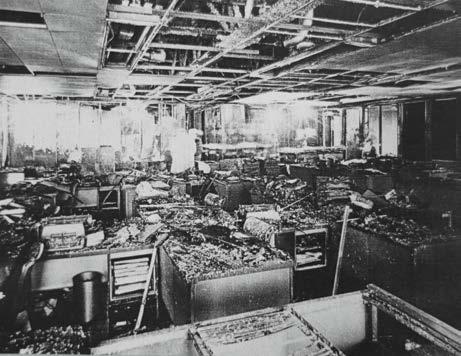
BARRY LEE OAM
It is not generally recognised that, prior to the horror of the infamous 9/11 terror attack in 2001, the World Trade Center in New York was subject to two calamities. On 26 February 1993, 650 kg of explosives planted in the underground garage of its North Tower were detonated.
Earlier still, on 13 February 1975, it experienced a serious fire that spread over nearly half of the 11th floor of the North Tower.
At that time, basic fire protection consisted of hydrant stations in each of the three stair towers. Water supply for the hydrant systems was from 190 kl tanks on four levels, two 3 kl/min at 15 bar pumps in the basement taking suction from city water mains, and one
3 kl/min at 15 bar pump at the first three tank rooms.
A manual fire alarm box on each floor provided two-way communication with a police desk in the basement. Ionisation-type smoke detectors were being installed at the return air outlets in the four quadrants of each floor.
The fire was noticed around 11 pm by a night worker on the 11th floor. He turned on the fire alarm to the police desk and the city’s fire department (FDNY) was called. One minute after the manual call was received, the smoke detector in the air conditioning plenum at the southeast corner of the 11th floor operated. Smoke detectors at the same relative positions on the 12th to 19th floors operated successively at about one-minute intervals. The air conditioning was
placed in purge mode—meaning that fresh air was being blown into the core area to keep it free of smoke and air was being drawn out of all the tenanted areas on the 11th floor to prevent smoke from spreading throughout the building.
It was not immediately noticed that the fire had spread to other floors, but a search disclosed fire issuing from vents in telephone closet doors on the 12th and 13th floors, igniting files and other combustibles in these office areas.
The fire involved some 840 m2 of the 11th floor and completely burned out telephone panels and wiring in the telephone closets on three floors, and caused severe damage on eight others.
A total of 24 fire appliances and 132 firefighters fought the fire.
Fortunately, there were no trapped occupants on the roof during this fire—helicopters would have been problematic due to a television transmission antenna on the roof, and high winds that always blow at the 110th storey.
Suspecting arson, fire marshalls worked undercover at the tower following the fire. A tower cleaner was later charged with setting a total of six fires at the World Trade Center in May that year.
In the aftermath of the 1975 fire, New York City laws were changed to require structures with floors to be divided into units of 700 m2 or less, and smoke-detection systems were required to shut down air conditioning systems to prevent the spread of fire.
In addition, automatic sprinklers were added in both World Trade Center towers. However, while an important component of any fire protection system, no sprinklers could have protected the World Trade Center from the aircraft fuel-driven fires that claimed its two towers 25 years later.
In 1975 there were more than 2000 high-rise buildings in New York City, excluding residential occupancies, of which around 800 were Manhattan office buildings. At the time, it was predicted that about 170 fires would start in these buildings each year.
The 2024 King’s Birthday Honours list recognises and celebrates 737 Australians, including awards in the Order of Australia, meritorious awards, and recognition for conspicuous service.
Among them are 31 recipients of the Australian Fire Service Medal, and 16 recipients of the Emergency Services Medal. AFAC and FPA Australia congratulate all recipients on the King’s Birthday Honours list, and extend recognition and gratitude to all those who work across the fire and emergency services sector to support safer and more resilient communities.
MEMBER OF THE ORDER OF AUSTRALIA (AM) IN THE GENERAL DIVISION
Dr James Alexander Mullins, Geelong VIC 3217
For significant service to science, and to the community through an emergency response organisation.
(Honorary) Mr Paul John Scott, NSW
For significant service to emergency response organisations through mental health support.
MEDAL OF THE ORDER OF AUSTRALIA (OAM) IN THE GENERAL DIVISION
The late Mr Paul Carter, Lithgow NSW 2790
For service to the community through emergency response organisations.
Mr Robert Armand Maul, Sydney NSW 2000
For service to the community through emergency response organisations.
Ms Karen Elizabeth Noonan, Monbulk VIC 3793
For service to community music, and through emergency response organisations.
NSW
Ms Lorraine Bruce, Wards River NSW 2422
Mr Paul James Dorin, Towradgi NSW 2518
Mr Paul Robert Johnstone, Malabar NSW 2036
Mr Peter Wiley Johnstone, Woodstock NSW 2793
Mr Clifford John Last, Bellingen NSW 2454
Mr Walter Joseph Murray, Ramornie NSW 2460
Mr Charles Otmar Schusser, Falls Creek NSW 2540
Mr Richard Thomas Scilley, Narrabri NSW 2390
Ms Fiona Stalgis, Winmalee NSW 2777
Assistant Commissioner Cheryl Anne Steer, Cronulla NSW 2230
Mrs Suzanne Beryl Talbert, Gables NSW 2765
Victoria
Mr Nigel Brennan, Yarra Junction VIC 3797
Mr Christopher Stephen Hardman, Croydon Hills VIC 3136
Mr Stephen Paul Hicks, Pakenham Upper VIC 3810
Mr Gregory Nicholas Keighery, Essendon North VIC 3041
Mr Gavin Rodney Thompson, Wantirna VIC 3152
Mr Cory James Woodyatt, Winter Valley VIC 3358
Queensland
Mr Peter Allen Bradow, Newtown QLD 4350
Mr Mark James Crowe, QLD
Mr Stephen Vincent Diete
Mr Scott Andrew Morgan, QLD
Mr Dean Thomas Tucker, Robina QLD 4226
WA
Dr Gregory John Henry, Scarborough WA 6019
Mr David Leonard Holland, Witchcliffe WA 6286
Mr Darren Peter Martin, WA
SA
Mr James Ernest Keatch, SA
Mr Phillip John McDonough, Onkaparinga Hills SA 5163
ACT
Mr Michael John Blaseotto, Monash ACT 2904
Mr Colin John O’Rourke, Yarralumla ACT 2600
NT
Mr Garry Russell Branson, NT
Mr Geoffrey Bryan Kenna, Swan Hill VIC 3585
EMERGENCY SERVICES MEDAL
NSW
Mr Ian Leslie Baker, Taren Point NSW 2229
Mr Andrew Edmunds, NSW
Mr David William Ellis, Smiths Lake NSW 2428
Mrs Terrie-Ann Hurt, Albion Park NSW 2527
Mr Roman Jerzy Mazurek, Forster NSW 2428
Mr Rodney John McDonagh, South West Rocks NSW 2431
Mr Colin James Tritton, Surf Beach NSW 2536


Mr Anthony Mills Whybrow RFD, Mosman NSW 2088
Victoria
Mr Grant Bruce Bedwell, Port Fairy VIC 3284
Mr Jim Kokkalos, VIC
Mr David McKenzie, Port Campbell VIC 3269
Mr Joseph Robert Watt, VIC
Ms Georgie Wettenhall, VIC
WA
Mr Glenn Michael Hall, Byford WA 6122
SA
Dr Sara Lesley Pulford, SA
NT
Mr Keith William Lewis
More information about each recipient is available at the Governor-General of the Commonwealth of Australia website: https://www.gg.gov.au/kings-birthday-2024-honours-list
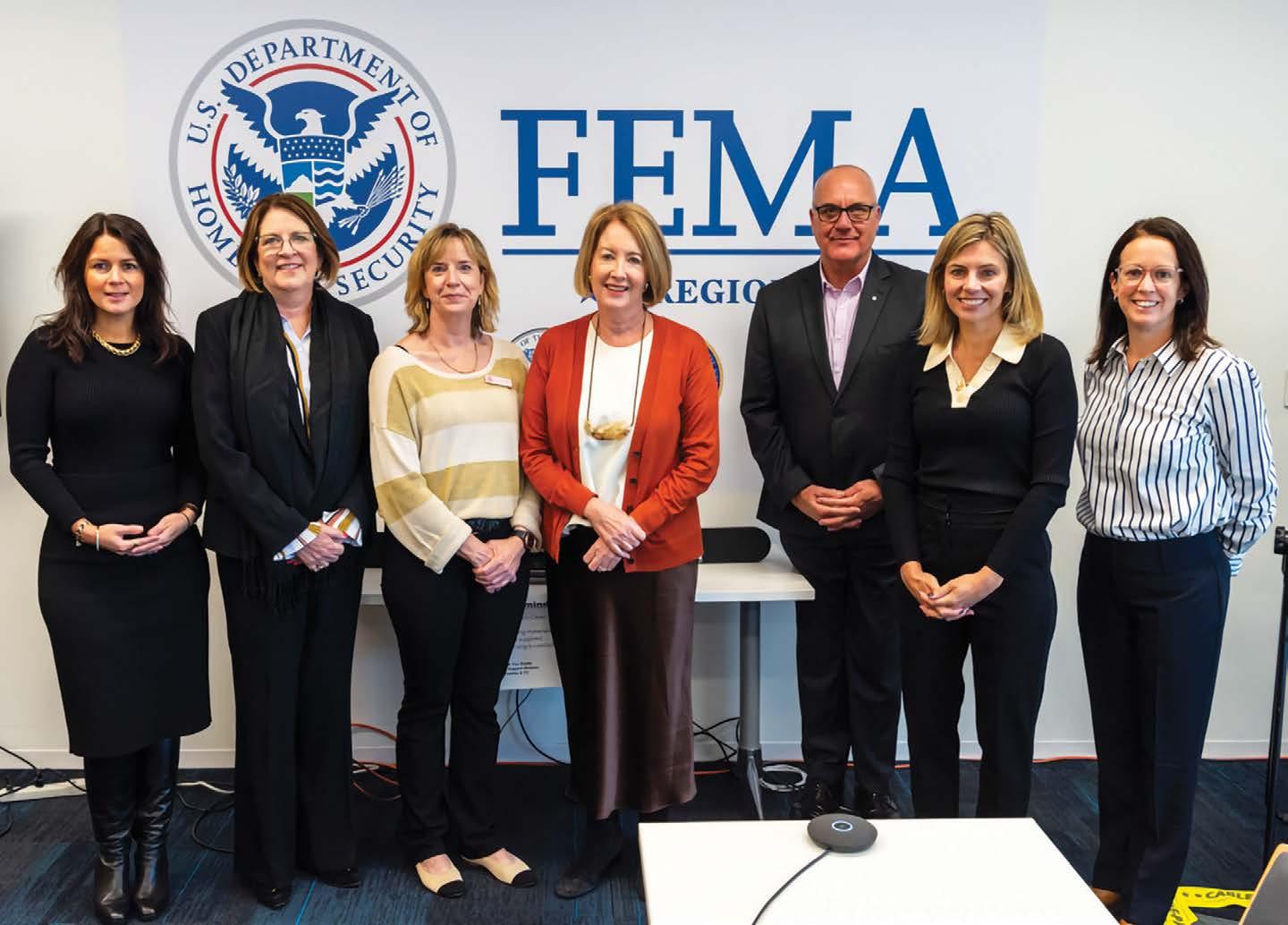
A group of AFAC delegates visited the US to attend the Commission on the Status of Women, where they shared insights and formed new partnerships to accelerate women’s recognition and representation in the fire and emergency services sector.
In March 2024, an Australasian contingent of AFAC representatives attended the United Nations 68th session of the Commission on the Status of Women (CSW68) in New York. Attendance was facilitated by the Champions of Change Coalition (CCC). AFAC’s partnership with the CCC commenced in 2017, establishing the Champions of Change Fire and Emergency Group. The group is convened by Kristen Hilton, who was a former Victorian Equal Opportunity and Human Rights Commissioner.
The group includes chief executives, commissioners, and chief fire officers from fire agencies, as well as emergency and land management services across Australia and New Zealand. A priority for the group has been building the representation of women in frontline service delivery positions that serve as a critical pathway to leadership positions in the sector.
UN 68th session of the Commission on the Status of Women
CSW68 was held from 11–22 March 2024 and the AFAC delegation included AFAC Deputy CEO
Erin Liston-Abel, NSW SES
Commissioner Carlene York, Fire Rescue Victoria Deputy Commissioner Michael Morgan, Country Fire Authority CEO Natalie MacDonald, and CCC Fire and Emergency Group Convenor Kristen Hilton.
The CSW is the largest annual gathering dedicated to gender equality and women’s empowerment. This year’s theme was ‘Accelerating the achievement of gender equality and the empowerment of all women and girls by addressing poverty and strengthening institutions and financing with a gender perspective’.
Throughout the week, meetings involved sharing insights, strategies
The AFAC delegation was joined by the US Fire Administrator and representatives from the US Federal Emergency Management Agency to discuss the barriers to increasing the number of women in frontline roles and their inclusion in the workplace.
and commitments focused on accelerating gender parity in leadership and addressing the persistent gender pay gap. Experiences and ideas were exchanged at a roundtable on progressing gender equality in the fire and emergency sector.
The AFAC delegation was joined by the US Fire Administrator and representatives from the US Federal Emergency Management Agency to discuss the barriers to increasing the number of women in frontline roles and their inclusion in the workplace. The commonalities in experiences across different geographies reinforced the incredible opportunity to learn from one another and progress change together.
Common challenges and opportunities were discussed, and new partnerships were formed on the importance of creating safe spaces. The Australian delegation advocated for uniforms that are fit-for-purpose and designed for women, as well as ways to ensure that fire and emergency services organisations genuinely support the work of women and men equally.
The AFAC delegation also attended the UN Global Compact CEO Roundtable that considered the importance of gender equality in the workplace, as well as promoting practices to achieve equal representation.
All businesses stand to benefit from greater equality for women, and the CCC resource, 7 Switches: A Guide for Inclusive Gender Equality by Design1 , helps to embed inclusive gender equality in all decision-making and design processes across everything we do. This helps to create a future where inclusive gender equality is a fundamental principle, rather than an afterthought.
The CSW gave the AFAC delegation an opportunity to listen and learn from other attendees about global challenges and advances in women’s rights. These stories served as a reminder of the indispensable role women’s rights groups and activists play in influencing legal and policy reform to tackle gender inequality.
The CSW reinforced AFAC’s commitment to progress equality for women through transparency,

leadership, and decisive action. It was a privilege for AFAC to be invited by the CCC to be part of a community committed to making a difference and to see firsthand the potential we have to drive change together.
The Champions of Change Fire and Emergency Group has focused on growing the talent pool, with 96% of AFAC Member organisations having systems and structures in place to address bias and ensure equality in their recruitment and promotion processes.
The group will be working to ensure everyone in the fire and emergency sector has access to appropriate, fit-for-purpose equipment and clothing that is gender inclusive and meets diverse physiology and cultural requirements. The group is working to lift the number of women attracted to and recruited into the sector, including frontline roles. The group is also addressing the culture across the sector to make it an equal and inclusive environment where people can thrive and progress their careers equally.
THE CHAMPIONS OF CHANGE FIRE AND EMERGENCY GROUP
https://championsofchange coalition.org/groups/championsof-change-fire-and-emergency/
THE UN 68TH SESSION OF THE COMMISSION ON THE STATUS OF WOMEN
www.unwomen.org/en/how-wework/commission-on-the-statusof-women
https://championsofchange coalition.org/resource/7-switchesa-guide-for-inclusive-genderequality-by-design/
Joining technical advisory committees
FPA Australia would encourage members to take up the opportunity of joining our technical advisory committees (TACs).
For more information on the different TACs and how you can get involved, please visit the TAC section on our website.
FPA Australia’s TACs rely heavily on the dedication of volunteers from our membership base and require active involvement to sustain and progress their important work.
Engaging with these committees not only contributes to critical outcomes but also presents an excellent opportunity for professional growth and networking. We encourage you to explore the various technical advisory committees and consider lending your expertise and insights to support their ongoing efforts.
If you are interested in applying for one or more of the TACs, please go to https://form.jotform.com/240448317369058
FPA Australia’s Technical Advisory Committee (TAC/17) Emergency Planning is actively seeking new members to enhance the committee’s expertise and scope.
TAC/17 Emergency Planning covers areas like workplace emergency planning, emergency response procedures and training, facility evacuations, and emergency/ evacuation plans.
Some of the key functions of this committee include:
◆ staying up to date with all relevant legislation, codes, Australian Standards, Competency Standards, and publications related to workplace emergency response procedures
◆ evaluating and providing valuable feedback on published and draft Australian Standards concerning workplace emergency response to the relevant Standards Australia committees
◆ contributing input to the development of regulatory updates and Australian Standards concerning workplace emergency response procedures
◆ assisting in preparing articles for publications that focus on topics related to the initial point
◆ reporting key issues, recommendations, and seeking advice from NTAC (National Technical Advisory Committee).
If you are interested in applying for TAC/17 Emergency Planning, please go to https://form.jotform.com/240448317369058
The TAC/1 meeting was held on Tuesday 2 July 2024.
The meeting covered several key topics and ongoing actions. An update is expected on WA Government recognition of FPA Australia assessments for Fire System Design.
Discussions on legislation included potential changes to occupational licensing models and FPA Australia’s assistance in restricted class licence transitions. Updates were provided on the AS 2293.2 draft, including changes to terminology and NCC requirements for photoluminescent signs.
The AS 1851 revision project is awaiting scope approval, with NSW planning to mandate compliance by February 2025. General business included a call for new members for the Emergency Planning Technical Advisory Committee (TAC/17), discussions on logbook development for mechanical services, and concerns about fire bolts in fire doors. The meeting also identified a need for guidance on failsafe mechanisms.
The next TAC/1 meeting is tentatively scheduled for November 6 2024.
The TAC/2 meeting was held on Thursday 4 July 2024.
The meeting covered several key topics and updates on various Australian Standards. The public comment process for AS 1670.1 was completed, with a summary of comments and resolutions presented. AS 1670.1, AS 1670.3, and AS 1670.4 have successfully completed the ballot process and were submitted to the publisher. These standards have now been published. AS 4428.6 recently concluded its public comment period, with the committee set to review and address the received comments. AS 4428.17 has completed its ballot process successfully, with the publication date to be announced. The AS 1851-2012 update was discussed, with publication of a new edition not expected until 2026-27.
The need for increased collaboration between technical advisory committees was emphasised. Ongoing projects were reviewed, including the Good Practice Guide for Speaker Layout and the Building Occupant Warning Systems document. Both require further updates and review. The committee discussed the necessity and suitability of publishing guidance material. The Emergency Planning Technical Advisory Committee (TAC/17) is seeking new participating members with expertise in various aspects of emergency planning.
The next meeting is tentatively scheduled for November 7 2024.
TAC/3/7—Portable
The TAC/3/7 meeting was held on Wednesday 13 March 2024.
A priority of TAC/3/7 will be to develop procedures for testing of lithium-ion fire extinguishers. The intent is for it to become a new section in AS 1841. A new working group was established specifically for this initiative, holding its first meeting on Wednesday 10 April. A second meeting was held on 8 May, which was an in-person gathering at Fire Australia on the Gold Coast. The TAC will continue its work on revising AS 1841, AS 1850, and AS 2444 standards, ensuring they remain current and effective.
The TAC/4/8/9 meeting was held on Thursday 14 March 2024.
The hydrostatic testing working group has been extremely active, achieving significant progress on the development of a comprehensive good practice guide. This guide aims to establish best practices and standardised procedures in hydrostatic testing, ensuring consistency and safety across the industry. The guide will serve as an invaluable resource for professionals in the field, promoting excellence and adherence to high standards in hydrostatic testing operations.

Running for the month of September, National Fire Protection Month is an annual series of events aligned with the anniversary of the Great Fire of London, which swept through the city in the first week of September in 1666.
Fire displaced 200,000 people and reshaped the physical, demographic, social, political, and economic structure of the city. It also led to strict new fire regulations and building codes, which were introduced the following year, to reduce the risk of future fires and prevent their spread.
This September, and across more than 20 events, National Fire Protection Month will highlight the importance of the industry to community safety, the support it provides to firefighters, and to the protection of life, property and environment.
For more information, visit www.nationalfpmonth.com.au
AFAC24 Conference and Exhibition powered by INTERSCHUTZ is Australasia’s largest and most comprehensive emergency management conference and exhibition, brought to you by AFAC, Deutsche Messe, the Institution of Fire Engineers (Australia), and Australian Institute for Disaster Resilience (AIDR). Last year, the conference and exhibition attracted record attendance of more than 3,500 emergency management personnel.
Hosted 3–6 September at the ICC in Sydney, the AFAC24 Conference and Exhibition will offer more than 100 conference presenters and the industry’s most impressive range of exhibitors, covering all facets of emergency management equipment, technology, and services.
The theme for AFAC24 is ‘Embracing innovation and disruption: designing the future for our sector’.
The host agencies for 2024 are: ACT Emergency Services Agency, ACT Parks and Conservation, Fire and Rescue NSW, Forestry Corporation of NSW, NSW National Parks and Wildlife Service, NSW Rural Fire Service, NSW State Emergency Service, and Surf Life Saving NSW.
Find out more about the event at www.afacconference.com.au
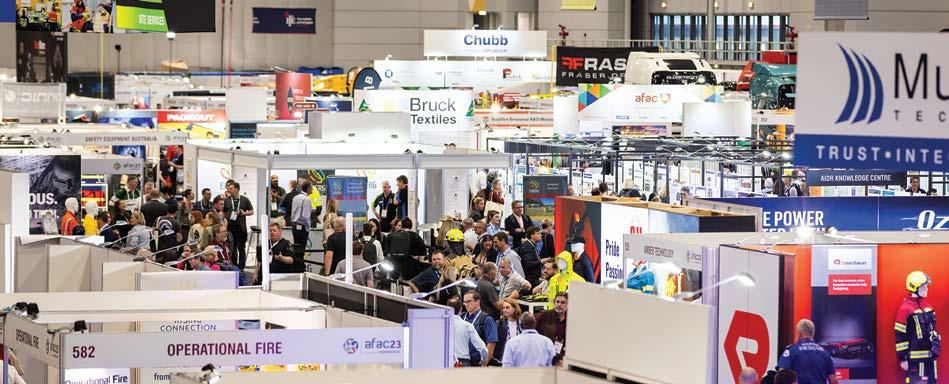
FPA Australia runs technical events catering to the fire protection industry on a range of relevant and interesting topics. Covering the whole of the sector— wet systems, dry systems, passive fire, mechanical fire protection, special hazards, bushfire, and emergency planning—these seminars and webinars provide useful opportunities for practitioners to pick up continuing professional development points.
Presented by leading experts, our seminars and technical webinars provide all the information you need about relevant fire safety topics.
For a full list of upcoming events, visit www.fpaa.com.au/events.
To catch up on some of our previous events, visit FPA Australia+, where you can access technical content in your own time and at your own leisure, without having to interrupt your workday.
Visit www.fpaaplus.com.au to browse our recorded webinars.
For those interested in correctly assessing Bushfire Attack Levels (BAL) and to determine the construction requirements that apply, there are courses this year booked for:
◆ Perth: 28 October–1 November
◆ Gold Coast: November
◆ Melbourne: November
Details can be found at http://tinyurl.com/4yx5cwse
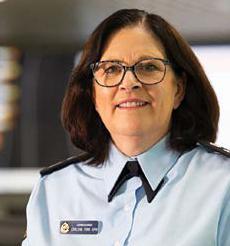
NSW State Emergency Service Commissioner
Carlene York APM retired from the role in May 2024, after almost five years leading the emergency service agency. Commissioner York joined the NSW SES in October 2019, becoming the first woman to lead the agency in its almost 70-year history, and the first woman leader of any emergency service in the state.
Her time at the SES saw her leading the agency through some of the state’s worst natural disasters, including record-breaking floods and the COVID-19 pandemic, and providing support during the Black Summer bushfires. Commissioner York also served as AFAC President from 2021–2023, and was a valued member of AFAC National Council and the AFAC Board.

Andrew Colvin has been appointed CEO of the Australian Red Cross. His exceptional leadership and deep understanding of crisis management will be invaluable as the organisation responds to the evolving needs of communities across Australia and beyond. The Australian Red Cross thanked Interim CEO Penny Harrison for her exceptional leadership during the transition period, and noted her continued role within the organiation’s executive structure. Mr Colvin will be based in Canberra.

CHRIS LARSEN (FPA AUSTRALIA)
Tel +61 431 900 712
chris.larsen@fpaa.com.au
ALANA BEITZ (AFAC)
Tel +61 3 9418 5233 alana.beitz@afac.com.au

Jeff Swann has been appointed by the SA Government as the new Chief Officer of the state’s Metropolitan Fire Service (MFS) following a recruitment process. Mr Swann, who has been serving as Acting Chief Officer since December 2023, brings more than two decades of experience to the role.
Mr Swann joined the MFS as a recruit firefighter in 2000 and progressed through the ranks to Commander in 2017, Acting Assistant Chief Fire Officer in 2021, and was appointed Deputy Chief Officer in 2023. Throughout his career, Mr Swann has demonstrated exceptional leadership across various sectors within the MFS.
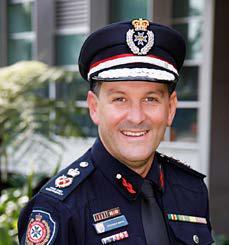
Stephen Smith has been announced as the new permanent head of Queensland Fire and Emergency Services (to be known as the Queensland Fire Department). Mr Smith is an experienced and highly respected fire and emergency services leader, having served QFES for more than 30 years.
Holding various regional and state roles, he has worked in diverse specialist areas where he gained extensive knowledge in emergency and crisis management, both domestically and internationally. He is highly regarded for his operational experience and leadership in many of Queensland’s most significant emergency responses.
PROTECTION ASSOCIATION AUSTRALIA (FPA AUSTRALIA)
ABN 30 005 366 576 PO Box 1049
Box Hill VIC 3128
Australia
Tel +61 3 8892 3133
Fax +61 3 8892 3132 magazine@fpaa.com.au www.fpaa.com.au

ABN 52 060 049 327 Level 1, 340 Albert Street East Melbourne VIC 3002 Australia
Tel +61 3 9419 2388 Fax +61 3 9419 2389 afac@afac.com.au www.afac.com.au
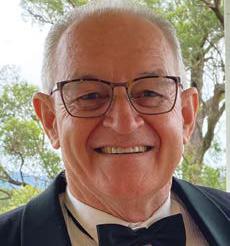
David Isaac has joined the FPA Australia team as the NSW Industry Liaison, working two to three days a week to support the Association’s NSW advocacy efforts.
Mr Isacc’s deep industry knowledge, extensive network, and proven track record in fostering collaborative relationships will be instrumental as we continue to engage with key stakeholders and associations across the fire protection sector.
These activities will be kept separate from his Board responsibilities, although he will continue to be a member of the NSW FPAS Committee.
Mr Isaac’s dedication to the industry and to FPA Australia is well recognised, and his contributions will significantly advance the organisation’s mission to influence and set high standards of competency across the fire protection sector.

Standards Australia has appointed a new CEO, Emma Harrington. She has held senior leadership roles with organisations including NRMA, Foxtel, Yahoo7 and Seven West Media. Ms Harrington is also an experienced board member, serving on the Boards of ADHD Australia, the Electric Vehicle Council, Chargefox, and Club Assist.
She has a history of transforming companies, engaging with employees, customers, and stakeholders.
TEL +61 431 900 712 magazine@fpaa.com.au
AND DESIGN:
Tel +61 3 9670 1168 www.coretext.com.au


Windsor Management Insurance Brokers is one of FPA Australia’s preferred insurance partners and provides specialised insurance covers for members.
As a professional working in fire protection, you need specialised insurance to protect yourself and your business. We offer a range of insurance solutions that can be tailored to suit your specific business needs.
Talk to us about
• Public liability
• Professional indemnity
• Contract works
• Management liability
• Business insurance
• Motor fleet
• Tools of trade
• BPAD insurance requirements
• Any other insurance requirement

Dedicated Insurance Team
NSW, ACT, WA, TAS, QLD & NT.
Jana Day Account Manager (02) 8765 9176 / 0499 224 024 jday@wmib.com.au
SA.
John Mangos Account Manager (03) 9320 8544 / 0438 333 886 jmangos@wmib.com.au
VIC.
Danny Gasbarro Account Manager (03) 9320 8542 / 0439 003 363 dgasbarro@wmib.com.au
an
review & quote

















